





The performance benefits of re-implanting without the hassle.
Two doses of high-performance growth. One simple labor-saving application. That’s the power of X – REVALOR®-XS and -XH (trenbolone acetate and estradiol extended-release implants).
REVALOR-XH IMPORTANT SAFETY INFORMATION: Not approved for repeated implantation (re-implantation) with this or any other cattle ear implant in growing beef heifers fed in confinement for slaughter. Safety and effectiveness following re-implantation have not been evaluated. Do not use in beef calves less than 2 months of age, dairy calves, and veal calves. A withdrawal period has not been established for this product in pre-ruminating calves. Do not use in dairy cows or in animals intended for subsequent breeding. Use in these cattle may cause drug residues in milk and/or in calves born to these cows. Implant pellets subcutaneously in ear only. Any other location is a violation of Federal law. Do not attempt salvage of implanted site for human or animal food. Not for use in humans. Keep out of reach of children. For complete safety information, refer to the product label.
REVALOR-XS IMPORTANT SAFETY INFORMATION: Do not use in beef calves less than 2 months of age, dairy calves, and veal calves. A withdrawal period has not been established for this product in pre-ruminating calves. Do not use in dairy cows or in animals intended for subsequent breeding. Use in these cattle may cause drug residues in milk and/or in calves born to these cows. Implant pellets subcutaneously in ear only. Any other location is a violation of Federal law. Do not attempt salvage of implanted site for human or animal food. Not for use in humans. Keep out of reach of children. For complete safety information, refer to the product label.




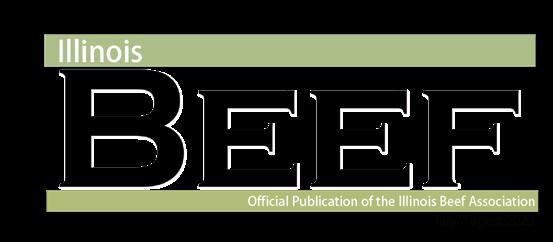
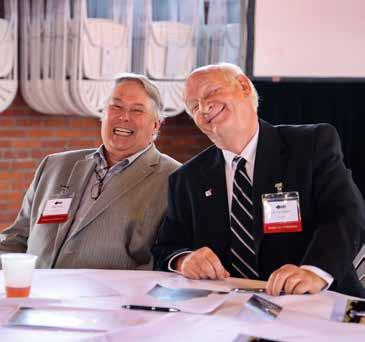
Illinois Beef Association’s Annual Meeting welcomed producers from across the state to learn about current issues in Cattlemen’s Education Series meetings and celebrate those who won one of IBA’s annual awards.

IBA Environmental Steward of the Year award winners, Aaron McManaway and his family, use resources of both family and land to prepare for the next generation.
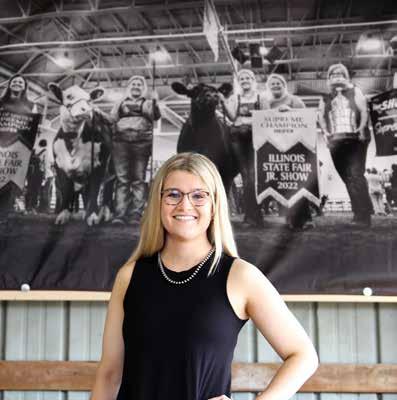
Recipient of the 2023 Outstanding Junior of the Year Award proves the industry’s future is bright.

Get all the details on this year’s Illinois Junior Beef Association Jackpot Show. Remember, you can earn points for our IJBA Points Program.

Find out about IBA’s newest junior event. Senior IJBA members explored beef industry career opportunities in both on-farm and office settings. Keep an eye out next spring for an application to join the next tour.
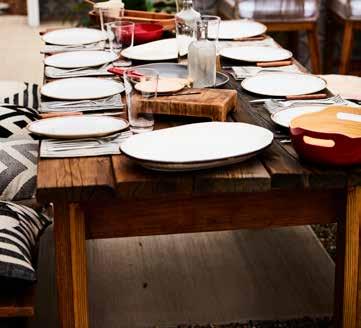
May Beef Month meant an opportunity for bold outreach - even through billboards. Turn here to see where we placed them, plus get expert tips on grilling for the rest of the summer. Share with friends to encourage them to eat more beef!
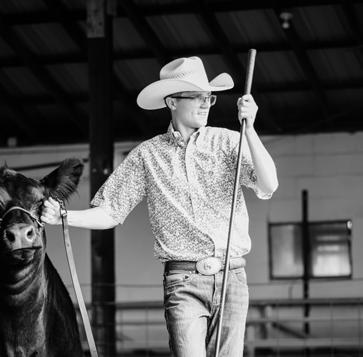
Since the last issue of Illinois Beef, breed associations have hosted their annual preview shows. Browse breed publications here to catch up on results.
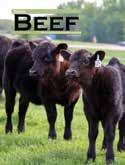

Dave Duzan, Lexington President
IBA Board of Governors
Email: duzanagy@mtco.com


Chair: Betsy Pech, Lincoln
Vice Chair: Justin Rahn, Mt. Carroll
Sec./Treas.: Wes Hornback, Monticello Directors
District 1
Justin Rahn, Mt. Carroll, justinrahn@hotmail.com
1st term expires: 2025 | 2nd term expires: 2028
District 2
Jake Perino, Deer Grove, twinrailsoverp@gmail.com
1st term expires: 2022 | 2nd term expires: 2025
District 3
Doug Hanson, Danforth, dough@proharvestseeds.com
1st term expires: 2026 | 2nd term expires: 2029
District 4
Cody Lowderman, Macomb, codylowderman@yahoo.com
1st term expires: 2024 | 2nd term expires: 2027
District 5
Betsy Pech, Lincoln, bpech55@gmail.com
1st term expires: 2021 | 2nd term expires: 2024
District 6
Matt Witte, Heyworth, matthewcwitte@gmail.com
1st term expires: 2022 | 2nd term expires: 2025
District 7
Kevin Rose, Salem, krr1998@hotmail.com
1st term expires: 2024 | 2nd term expires: 2027
At Large Directors
Scott Wetzell, Tampico, sd_wetz@hotmail.com
1st term expires: 2020 | 2nd term expires: 2023
Jake Fidler, Fairview, salebarn@mymctc.net
1st term expires: 2022 | 2nd term expires: 2025
Wes Hornback, Monticello,whornba2@gmail.com
1st term expires: 2024 | 2nd term expires: 2027
Bruce Betzold, Nokomis, betzoldfarms@yahoo.com
1st term expires: 2022 | 2nd term expires: 2025
Larisa Willrett, Malta, lwillrett1313@gmail.com
1st term expires: 2022 | 2nd term expires: 2025
Rick Dean, Le Roy, deanfarm4@gmail.com
1st term expires: 2024 | 2nd term expires: 2027
Ted Prehn, Jerseyville, tedprehn@gmail.com
1st term expires: 2026 | 2nd term expires: 2029
Executive Vice President Financial Officer
Programs & Services Manager
Membership & Communications Manager
Publications & Business Operations Manager
Shannon Welsh, Blandinsville Vice President
IBA Board of Governors
Email: cowdynasty@yahoo.com
Chair: Jamie Martz, Maple Park
Vice Chair: Lou Lamoreux, Lanark
Sec./Treas.: Thad Tharp, Monmouth
Directors
District 1
Anna Flikkema, Lanark, flikkema.anna@gmail.com
1st term expires: 2025 | 2nd term expires: 2028
Lou Lamoreux, Lanark, unclelou49@gmail.com
1st term expires: 2023 | 2nd term expires: 2026
District 2
OPEN
Bill Gebeck, Buda, wgebeck@aol.com
1st term expires: 2023 | 2nd term expires: 2026
District 3
Jamie Martz, Maple Park, jamiemartz85@gmail.com
1st term expires: 2024 | 2nd term expires: 2027
Kip Harms, Cullom, harms2@frontiernet.com
1st term expires: 2026 | 2nd term expires: 2029
District 4
Carol Lock, Avon, clock7857@gmail.com
1st term expires: 2025 | 2nd term expires: 2028
Thad Tharp, Monmouth, tthaddeus88@gmail.com
1st term expires: 2023 | 2nd term expires: 2026
District 5
Joan Harrison, Minier, joan.harrison16@yahoo.com
1st term expires: 2025 | 2nd term expires: 2028
Darin Smith, Alexander, simmybreeder68@hotmail.com
1st term expires: 2023 | 2nd term expires: 2026
District 6
Chase Brown, Warrensburg, cdbrown2@gmail.com
1st term expires: 2022 | 2nd term expires: 2025
Wendell Alwardt, Altamont, walwardt1@yahoo.com
1st term expires: 2023 | 2nd term expires: 2026
District 7
Garrett Mattox, Anna, bigmcattle@hotmail.com
1st term expires: 2025 | 2nd term expires: 2028
Ryan DeWitt, Cobden, rdewitt93@gmail.com
1st term expires: 2026 | 2nd term expires: 2029
Josh St. Peters, josh@illinoisbeef.com
Mary Faber, accounting@illinoisbeef.com
Annie Schoetmer, annie@illinoisbeef.com
Devin Bollman, devin@illinoisbeef.com
Olivia Hoots, olivia@illinoisbeef.com
Dr. Paul Walker
Travis Meteer
Dr. Teresa Steckler
Dr. Jennifer Earing Al Lyman
Past President
U of I Extension
U of I Extension
Illinois State University
NCBA Beef Promotion Operating Committee





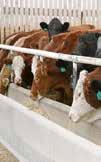
Protect your farm from a decline in prices on fed cattle, and feeder cattle (including unborn calves) using current futures prices. With Livestock Revenue Protection, you can set a price floor and mitigate risk from national marketplace volatility.

Dave Duzan, Illinois Beef Association President
Thank you for the opportunity to serve you as the new president of IBA. When I was elected this summer during the Annual Meeting in Springfield, I told the audience there I was looking forward to the work we had ahead of us, and I believe our Board of Governors has a great group of thirty leaders invested in the future of Illinois’ beef business. I do not come to this position with a specific agenda but do have a strong interest in bringing together our directors, affiliate leaders and cattle operations to make sure we are meeting the needs and objectives of Illinois’ beef industry.
The beef business is my full-time business, and building a strong future for cattle operations in our state is important to me. Today I operate a stocker-backgrounder outfit in McLean County, and work with custom feeders to finish fat cattle each year. My wife Kellie, and our two grown daughters, Lindsay and Jessica, each play different roles in working in our cattle business as well. We have a legacy in the Angus business, and until recent years we ran a cowcalf herd with a yearly bull sale that put us in connection with ranches and producers throughout dozens of states. This cattle business is our livelihood, and as we have built and expanded for the next generation, I found it a great opportunity to get more involved in the IBA as a director and leader.
The last two years I had the great experience of serving as your vice president, and that gave me the chance to travel throughout the state meeting many of you at county cattlemen’s events, or during IBA meetings and conferences. I really enjoy connecting with each of you and find that some of my strongest friendships and business relationships have grown out of contacts I initially made through my years of membership and participation in this organization.
As your new president, I am open to your input and ideas. I want all our members to feel welcome to call or e-mail me and share your thoughts on how we can continue to grow this association. It is a grassroots organization, and that
means we need to maintain active and engaged members to help shape our activities and objectives. I can speak for each director on the Board of Governors when I say we enjoy serving you as leaders, but we want to hear from you about what you would like to see out of this association.
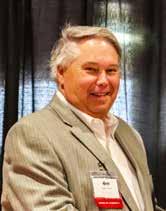
This summer the IBA has been busy working on promotional activities and member programs. Since the June Annual Meeting, leadership and staff have been active at several events with beef promotion programs as part of our checkoff mission. We have had members and affiliates engaged in dozens of advertising and outreach programs in rural counties, as well as in major cities, helping fulfill our mission of connecting Illinois’ consumers with facts and information about our beef product. Our policy mission has also been at work, through leader and staff engagement with elected officials and government agency leaders discussing Farm Bill priorities, as well as the weather impact we have experienced this spring and summer. Over the last two months, IBA has been very active in addressing and advocating for the needs of family beef farms with a variety of government officials as we all navigate the challenges of drought and severe weather events in many counties across the state.
The busy days of Illinois State Fair, DuQuoin State Fair and Farm Progress Show are upon us. I hope I get the chance to meet you at one of our many activities during these events. Please reach out and introduce yourself as I would like to know more about your operation and your family’s involvement in the beef industry. This is a diverse organization, and it takes all of us invested as members to keep the association growing and thriving into the future.

Wednesday, August 9
Whether it is speaking with leaders on agriculture day or organizing junior events, the Illinois Beef Association seeks to serve its members and promote beef to consumers during the 2023 Illinois State Fair. We hope to see you there!
Junior Showmanship @ 12:00 p.m.; Junior Performance Cow/Calf @ 6 p.m.
Thursday, August 10
Junior Heifers: Maine Anjou, Maintainer, Charolais, Hereford, Polled Hereford, Chianina, Limousin @ 7:30 a.m.
Friday, August 11
Junior Heifers: Low % Simmental, Angus, Simmental @ 7:30 a.m.; Open Shows: Maine Anjou, Charolais @ 8:30 a.m.
Saturday, August 12
Junior Steers @ 8:30; Open Shows: Hereford, Polled Hereford @ 8:00 a.m., Parade of Champions - Coliseum of Champions @ 4:00-6:00 p.m.
Sunday, August 13
Open Shows: Simmental, Limousin/Limousin Flex, Low % Simmental; Junior Steers @ 8:00 a.m.
Monday, August 14
Open Shows: Shorthorn/Polled Shorthorn, Shorthorn Plus, Angus
Don’t Forget to Come Visit Ribeye Corral in the Commodities Pavilion to Support the Illinois Beef Association!
August 7
Junior Stalls and Tie outs Available
August 8
Junior Breeding Females & Cow/Calf Move-In and Check-In @ 8 a.m.
August 9
Junior Steer Move-In and Check-In @ 8 a.m.
Superior Young Producer Contest
August 10 - 20
Volunteer at Ribeye Corral
August 11
Agriculture Day; Master Showmanship Contest @ 5:00 p.m.
August 13
IJBA Jackpot Show @ 12:00
August 16
Governor’s Sale of Champions - Coliseum of Champions
Josh St. Peters, Illinois Beef Association Executive Vice President
We are amid a season that is always jam-packed in our industry. Summer brings so many activities, meetings, gatherings and events that it seems we find ourselves just coming-and-going, and that is aside from the many activities keeping us busy on our individual farming operations this time of year, too.
In recent weeks, I have enjoyed the chance to keep tabs on many of our IBA families during their annual sprint from regional and national cattle shows, into county fair season. With juniors and calves in tow, several of you have been very actively engaged in showing and promoting your cattle all throughout this state and across the Midwest, and through social media and text messages I have had the chance to see just how tremendous your achievements have been. Congratulations to the dozens of Illinois beef families who have brought home regional and national winnings for your efforts. I think those achievements are exceptional, and the stories and memories you collect during those pursuits are certainly an incredibly important part of the whole experience.
At the same time, several of our commercial beef members throughout the state have experienced their own achievements in marketing strong offerings in a market that has brought great value back to Midwestern fed and finished cattle. I have heard from several members that each expressed similar stories about new cattle buyers or additional attention from buyers they have not seen or heard from in recent years; it certainly seems we have put leverage back in the favor of the cattle operation these days, and that is a welcomed shift from where we had been over some months in the past.
All this great work, be it at a county fair or on your own commercial feedlot, reflects a quote I remember seeing a couple of years ago from an Olympian. Mia Hamm has won multiple gold medals in her career as an American women’s soccer champion, and inspired an entire generation of young athletes to work at being successful, but also working towards continuous improvement:
Her words on celebrating success, but keeping an eye toward getting better, are a great reminder of how our industry shows up in this hectic season. At IBA, we are in our season of celebrating great winners – recognizing our annual award recipients at the recent Summer Conference and Annual Meeting, supporting the major recognitions in our junior beef programs during the upcoming Illinois State Fair and DuQuoin State Fair beef shows, and participating in some exceptional recognition programs recently at the NCBA Summer Business meeting. But we want to keep the industry growing, getting stronger and better every day.

Your IBA Board of Governors is building for a stronger future, as leaders work on the FY2024 programming and budgets which will take shape later this fall. The Executive Committee is engaged in a planning effort that can build on our recent years of growth and expansion within IBA, because they want recent successes of the association to keep fueling stronger results for your operation, and for your membership.
Throughout this issue you will see several opportunities for you to get more involved, participating in upcoming IBA events or volunteering your time and talents at activities where we could use your help. Please take the chance to reach out to the office and sign up to participate. We need your involvement to help make things happen for the industry.
If you are at the state fairs or the farm shows on our calendar in the coming weeks, please make sure to stop by IBA’s activities at each event and say hello to staff. We love the chance to meet members and want to hear what you are up to on your operation.
Keep building on your successes, and best of luck in your upcoming endeavors!

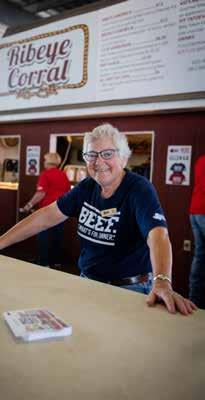

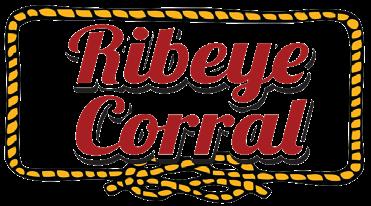



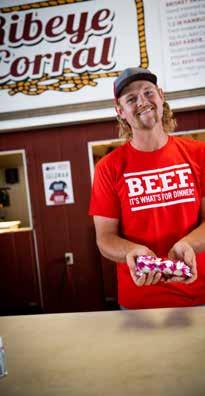

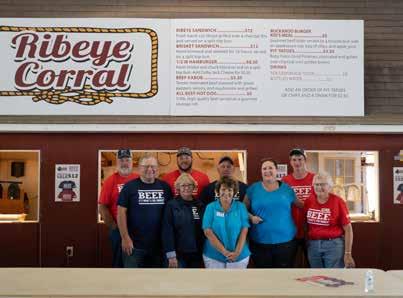
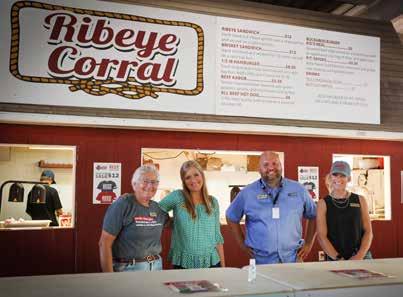
Travis Meteer, University of Illinois Extension Beef Specialist
The lack of rainfall has created a major hurdle for Illinois farmers. While drought is not a new thing in the cattle business, it important to review a few strategies that can be deployed to get through tough times.
The producers that have implemented rotational grazing systems have seen the benefits this year. Rotational grazing is built around principles of managing the forage. Rest periods are vital to and have helped forage grow even with little moisture. Keeping the ground covered to limit moisture loss and maintain cool soil temperatures has been a huge benefit to pasture forages. Producers that turned out early and overgrazed pastures are already feeding hay.
A few animal management strategies that should be considered when managing through a drought:
Culling cows that are open, old, have problems with feet, udders, temperament, or poor performing. Scheduling an early pregnancy check can aid in culling cows prior to the fall. Cull cow prices were higher in the summer last year, then dropped off in the fall when traditionally cull cow runs are larger.
Early weaning calves can help facilitate early culling of cows. Early weaning can also reduce nutrient demands on cows and help maintain cow body condition scores. Cow nutrient requirements are decreased due to the absence of lactation. Cow dry matter intake can be reduced by up to 40%, thus relieving grazing pressure. Early weaning is not fool proof. You must have a plan. Facilities, labor, feed, and good management are all necessary for success. Consult with your veterinarian on health protocols and provide palatable, nutrient-dense feedstuffs to start calves. Shade, water quality, and temperature must be considered when deciding if early weaning will work on your farm.
Creep feeding will offer supplemental nutrition to calves and keep your weaning weights up. As calves approach 120 days old, nearly half of their nutrition comes from somewhere besides milk. Creep feed fills that gap, especially during a drought when grazeable forage is poor. While creeping helps your calves, it does little to free up nutrition for the cow. Calves still prefer milk over feed so don’t expect to drastically improve cow condition through creep feeding. When it comes to feed for cows, here are a few considerations:
For immediate forage replacement, keep in mind that feed delivered to the pasture as a forage replacement needs to be palatable. Cows still prefer grass to hay, so feeding hay to cows on short pasture can result in continued overgrazing of the pasture and cows wasting a higher percentage of hay. In this scenario, dry lotting cows to limit-feed hay may be more economical. When pricing feed, co-products in the wet form are most likely the best value. If you cannot manage wet feeds, you should be looking into options on your farm to
accommodate them. If you have ability to mix wet feeds with hay, cornstalks, straw, or CRP hay you can provide a much more economical diet than purchasing expensive hay or dry feed.

For future forage production, consider summer annuals like sorghums, sudans, or pearl millet. These plants are more drought tolerant and can add tonnage to forage inventories. Be mindful of nitrates. These forages likely need careful grazing management or wet-baled when harvested. If given moisture, fall seeded forages like oats, turnips, and rye can produce good tonnage. Cover crops seeded in late July and early August prior to the hurricane rains in 2012 were a big aid in surviving that drought.
Drought stressed corn harvested for corn silage may be an option to build feed inventory. However, it is important to test drought stressed corn for nitrates as levels will most likely be elevated due to drought.
Straw and cornstalks can be forage replacements, but will need to be supplemented depending on what stage of production cows are in. In my opinion, grazing cornstalks is a no-brainer. Soybean hay may be an option as long as there are no restrictions on chemicals applied during the growing season.
We will be updating our resources and continuing to provide consultation on drought management as the season progresses. More information available online at https:// extension.illinois.edu/beef-cattle
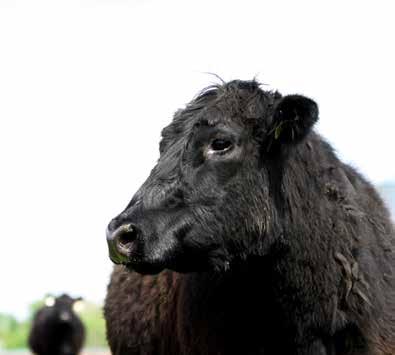
Paul Walker, Professor Emeritus, DI Walker Consulting
A discussion of the effects of adverse weather conditions, such as storms, on feedlot cattle feed intakes and subsequent cattle health includes a discussion of several topics including: available bunk space, type of storm, normal rumen activity, cattle behavior and diet modification. For as long as the cattle industry has been finishing cattle on high grain diets, “storm” diets have been utilized in some form or another to keep cattle on feed.
Available bunk space will affect how cattle perform immediately after a storm. Most confinement facilities are designed to provide each cattle six inches of linear bunk space. This norm is based on the assumptions that cattle require 30 minutes or less to consume feed at one eating and it is too expensive — therefore, not necessary — to provide more bunk space. For all cattle to eat at one time, 20 to 24 inches of bunk space is required, which is great for incoming calves but not necessary for adjusted cattle. Providing six inches of bunk space per animal in a confinement pen housing 100 cattle requires 50 linear feet of bunk space and if cattle require approximately 30 minutes to eat their fill at one feeding, it requires two hours for 100 cattle to eat one feeding. This is why I always recommend confinement buildings to contain two fenceline bunks per pen — one linear foot per head of cattle; it doubles the bunk space and cuts the eating time in half to one hour. This is especially important following a weather event when all the cattle want to eat at the same time.
Generally when we think of storms and the storm’s effect on feedlot cattle intake, we think of a 24 hour, winter, snow blizzard. Typically the bunks fill with snow, the cattle do not eat at the normal time, then after the storm the bunk is cleaned, fresh feed is fed and the cattle overload. But there are other types of storms that can have the same effects.
• While cattle eat to stay warm and cold temperatures will encourage cattle to increase consumption, extremely cold weather, below zero, will reduce cattle intake. “Reading the bunk” becomes most important during cold weather to prevent the bunk from becoming slick and to prevent feed accumulation in the bunk. Increasing the percent dietary roughage during negative temperatures is the easiest way to increase heat increment and thereby help cattle maintain body temperature.
• A cold, wet drizzly rain — late fall through early spring — that extends over a 24-hour period or longer may require use of a storm diet. Cattle stay huddled in a group, fail to eat regularly, the feed in the bunk gets excessively wet, the rain lets up, fresh feed is deposited and the cattle “load up.”
• What about a 24 to 48 hour high wind event? Follow the feed wagon on a windy day and observe how much of the dry ground roughage blows away. This is particularly concerning when the diet dry matter contains only 10% or less roughage. In addition, as the wind blows the feed around in the bunk, cattle will spend less time eating and consumption goes down. Even cattle do not like dust/fines
in their eyes.
• Heat waves also decrease intake, resulting in variable feed intake. Anytime cattle on full feed reduce intake it will be followed by an episode of increased feed intake, i.e., loading up. Such shifts in intake patterns make cattle meal eaters instead of nibblers, predisposing cattle to digestive upsets.

It is important to understand cattle behavior when knowing when to alter diets to feed a “storm ration.” Cattle like to do things at the same time — eat at the same time, drink at the same time, rest at the same time, etc. That is why adequate bunk space and waterer space is so important. Short changing cattle on bunk space facilitates dominate cattle who eat first and eat longer to overload after a storm event, especially if any sorting of dietary ingredients is going on at the bunk. Consequently, subordinate cattle have to wait longer to eat, encouraging them to overeat, also.
The primary effects of overeating following a storm event are bloating and lactic acidosis. When cattle overeat the rumen overfills with feed and fermentation is rapid with continuous gas production. The rumen typically expels gas production, eructation, through normal activity of the rumen wall, which is continuous, slow and methodical. If gas does accumulate within the rumen, it means rumen motility has stopped and if rumen motility has stopped, then motility of the entire gut has stopped — rumen stasis. When gas accumulates within the rumen, pressure builds against the diaphragm, also known as bloat. In severe cases, the animal is unable to breathe and suffocates.
According to Kelly Krikemeier, Ph.D. Nutritionist for Foote Cattle, in a November 2022 article published in Feedlot Magazine the question is, “What causes rumen stasis in this situation?”
In the feedlot, it is best to call feed so that cattle have crumbs [5-10 percent] remaining in the bunk as the first round of feed is delivered [each day]. During this period of “steady-state” cattle will consume several small snacks during the entire day and nighttime hours, whereas cattle trained to a slick bunk feed call tend to consume feed more as a “meal eater.” [Full-fed meal eaters are as likely to go off feed as much as nibblers.] When cattle consume several “snacks,” a continuous steady-state ruminal fermentation occurs, and there is a large amount of feed fermented in the rumen. Digestion through the small intestine is completed, and the only thing that occurs in the lower gut is water re-absorption.
After a storm and if the cattle missed a meal (feeding), they are hungry. The aggressive/ dominant cattle will eat a large one-time “meal” instead of “nibbling” over time. As a result of
the changed eating behavior, a “pulse-dose” of this newly ingested feed exits/escapes ruminal fermentation, and is only partially digested in the small intestine. This enters the lower gut with a huge fermentation potential remaining. Compared to the rumen, microflora inhabiting the lower gut include clostridia, salmonella, e-coli and a multitude of other opportunistic pathogenic bacteria. And, because the lower gut has no “buffering systems” per se, when this “bolus” of unfermented feed enters the lower gut, there is an explosion of the numbers and activity of pathogenic bacteria and toxins are produced.
With this rapid increase in production and absorption of toxins, the animal’s internal defense shuts down gut motility as a survival mechanism. Zero gut motility means digestion/fermentation/ toxin production slow down greatly. But the flipside of this survival mechanism (no gut motility) is that gas accumulating in the rumen makes bigger numbers of pen dead bloats.
When a large meal is consumed by finishing cattle, it will cause an excessive acid load in the rumen, whether the diet is highly fermented in the rumen (flaked corn) or moderately fermented in the rumen (dry rolled corn). The large acid load is often devoid of lactic acid, but ruminal pH still drops down to 5.0 or less, and total VFA concentration in the rumen exeeds 225 millimolar. This high rumen acid load results in metabolic acidosis and the long
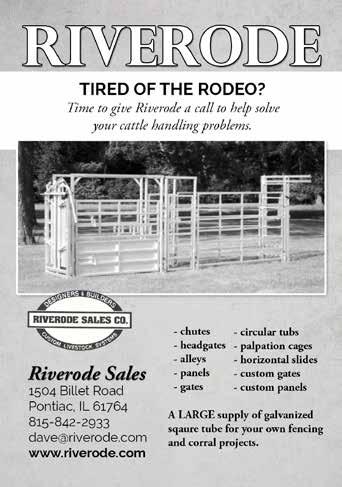
term consequences include laminitis, poor doers (shallow gutted animals that never return to normal feed intake), outbreak/increase in “respi-pulls,” more AIPs occurring all the way to slaughter, and perhaps even a higher rate of “bullers” because of changes in cattle behavior/restlessness (paras. 4-7, 9).
The objective of using storm diets is to lesson the impact of the storm event on animal health, to have fewer pen deads due to bloat and to reduce the negative impact of a big acid load in the rumen as cattle come back on feed. Switching to a short-term storm diet is mainly important for cattle receiving a high concentrate diet that includes 12 percent or less roughage (dry matter basis) and little to no distillers grains. When I was at Illinois State University, our base finishing diet contained 15 percent roughage and 40-45% distillers grains. A storm diet was not necessary. Generally a storm diet consists of uping the percent roughage in the diet to 15-20% on a dry matter basis and maybe decreasing the highly digestible starch in the diet, replacing/decreasing the percentage steam flaked corn with dry rolled corn or replacing dry rolled corn with whole shelled corn. It is best to switch the cattle to a storm diet 24 hours before the storm event occurs and maintain the storm diet for 24 hours after the storm event ends. This provides a little normalcy to the diet. Maintaining dietary consistency is most important in finishing cattle diets. Therefore, utilization of a storm diet should be a rare occurrence. Those four Golden Rules for feeding cattle always apply: Feed The Same Feed, Feed The Same Time, Feed The Same Amount, Feed The Same Way. Doc

Egyptian Cattlemen’s Association donated $1000 to the Chester Area Christian Food Pantry in Randolph County to purchase 285 pounds of ground beef at Rozier’s Grocery Store in Chester to distribute to their clients.
Pictured below are members of the Egyptian Cattlemen’s Association: Vice President Kenneth Hecht, President Larry Gross, Secretary/Treasurer Dwayne Schwarz, and food pantry volunteers Dan Hornbostel, Mark Colvis, Kathy Hustedde and Dave Hustedde.
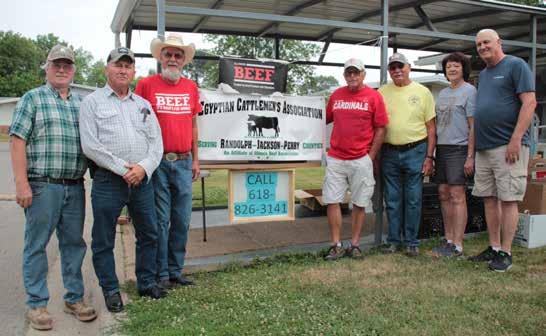
Heartland Beef Alliance celebrated May Beef Month by serving 240 ribeyes at the Lincoln Farm & Home store. Serving the ribeyes were Reese Entwistle, Diane Lindgren, Porter Schwantz, Nicole Schriener, Matt Short and Paul Schwantz (pictured below). Grillers were Randy Pech and Jerry Entwistle.
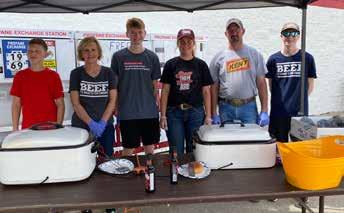
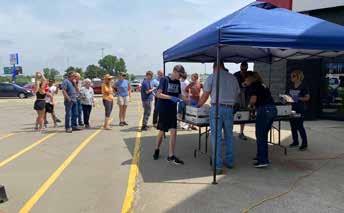
Do you have Affiliate News? Submit information to Annie Schoetmer at annie@illinoisbeef.com or call 217-787-4280. Please notify Annie with changes to affiliate officer teams.
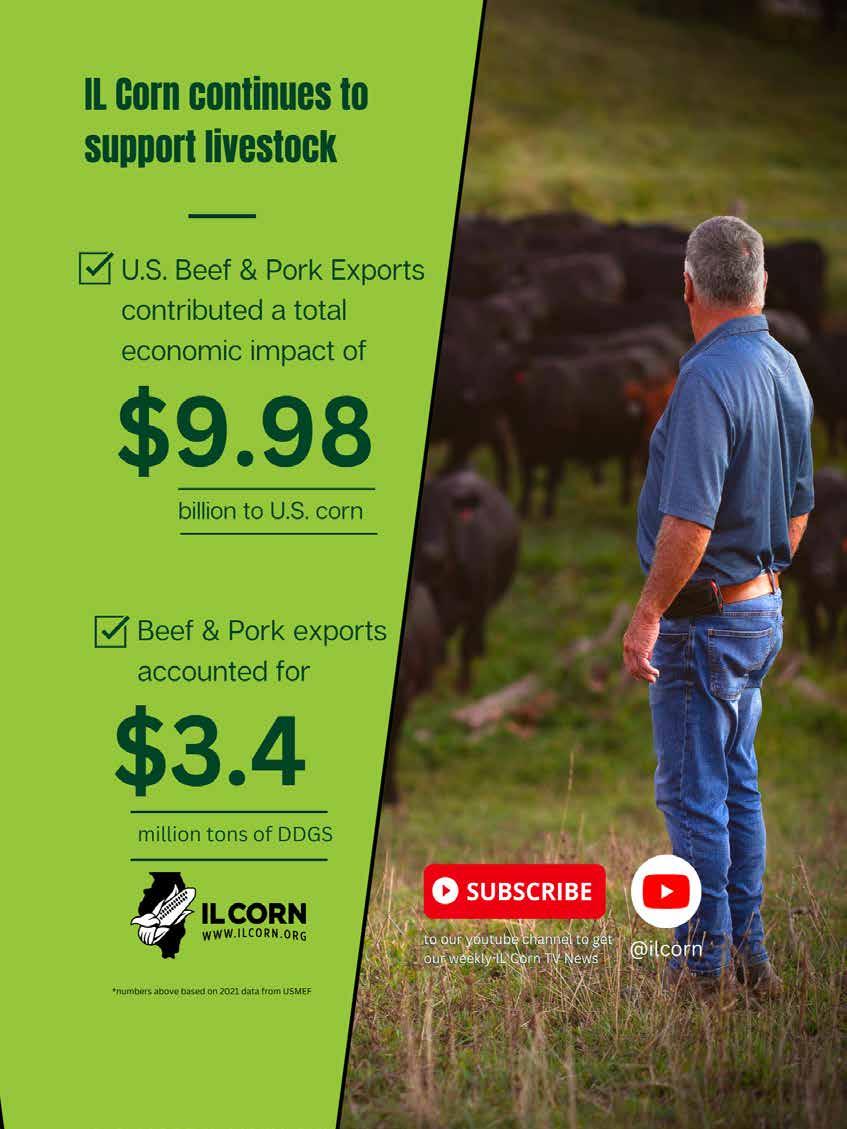
Illinois Beef partnered with Illinois Pork Producers once again for the annual Illinois Livestock Leadership Institute held on June 7-9. Juniors involved in the agriculture sector across Illinois went on tour, beginning in Springfield and heading straight to Funk Farms Premium Beef in Shirley where they learned about the company and were fed some Funk Farms burgers. Then they traveled to Kilgus Farmstead, a dairy operation in Fairbury, for a tour from Jenna Kilgus and, of course, ice cream. Fair Oaks Farm in Fair Oaks, Indiana, was the next stop. They are an agritourism operation specializing in dairy and swine. There, they also learned about thinking outside the box when it comes to starting a career. Attendees ended the excursion by visiting the University of Illinois Feed Mill and Meat Sciences Lab where they received insight on career opportunities in both fields.
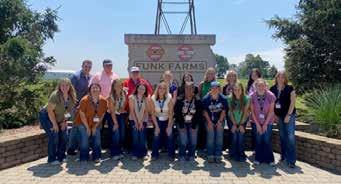
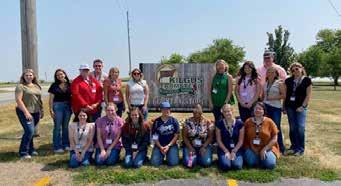

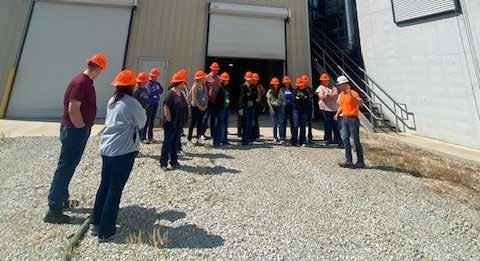
Illinois cattle producer and IBA member Trevor Maiers of Adams county represented Illinois at this year’s NCBA Young Cattlemen’s Conference. He was recommended by some of his fellow cattlemen and members of IBA’s board and staff as deserving of the opportunity.
According to National Cattlemen’s Beef Association, “since 1980, the Young Cattlemen’s Conference tour has been a proven success in identifying and developing potential leaders for the beef industry. Serving as a cornerstone of leadership training for the beef industry, YCC provides young leaders with a comprehensive understanding of all aspects of the industry, from cattle and beef production to the consumer, including exposure to the national grassroots process.”
After being a participant in IBA’s Beef Leadership Academy inaugural class, Maiers continues on the path toward leadership in the cattle industry through his participation in the conference and new relationships to young producers across the country.

Illinois Soybean Association hosted an event on June 10 as part of the “We Are the 96%” campaign and in celebration of dairy month. The campaign, which began earlier this year, celebrates the fact that 96% of Illinois farms are owned and operated by families. This specific event took place at Clavin Dairy Farm in Rosamond, in Christian county, and Illinois Beef Association celebrated the accomplishments of the campaign at the event.
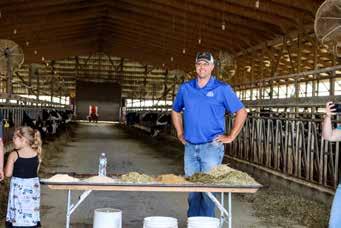
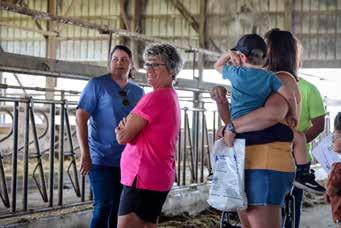
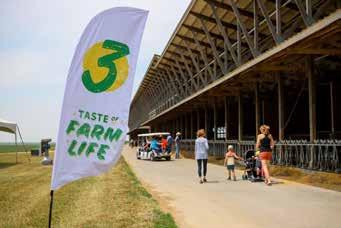

The San Francisco Chronicle reported, and Berman and Company, a communications and governmental affairs firm in Arlington, Virginia, shared that “California’s Department of Food and Agriculture moved to postpone implementation of Prop 12 until next year–just a month after the Supreme Court favored the measure. According to a court filing, agency lawyers recognized there will ‘necessarily be a period of transition,’ giving state regulators time to inform producers about compliance with the upcoming law. While Prop 12 received the backing of a majority of voters in 2018, it has since then faced legal hurdles related to interstate commerce.”
The U.S. Department of Agriculture gave two lab-grown meat companies, Upside Foods and Good Meat, final approval to begin production and sales, just a few months after the FDA’s preliminary green light. A recent report by the Associated Press cites U.S. approval of chicken made from cultivated cells, the nation’s first ‘lab-grown’ meat. According to the article, the two lab-grown meat companies “had been racing to be the first in the U.S. to sell meat that doesn’t come from slaughtered animals.”
In other news, news reports detail that “agribusiness company Cargill, the largest privately held firm in the country, is quietly expanding its investments in fake meat as more well-known names such as Beyond Meat and Impossible Foods struggle.” An article from CNBC states that Cargill is a late-comer to the fake meat game, following the lead of companies such as Tyson Foods and Hormel Foods, though they have judged the market is not “satiating” consumers like real meat tends to do, and stock for the product continues to fall. Keep your head held high beef producers, consumers still like your product and IBA is here to make sure that continues.
The black vulture population has increased in Illinois in recent years, particularly in the southern portion of the state. These birds often prey on young livestock, causing injury and sometimes death, creating major financial losses for some livestock farmers.
Illinois Farm Bureau has renewed the statewide depredation permit for black vultures from the U.S. Fish and Wildlife Service. IFB continues to work with USDA Wildlife Services to issue federal sub-permits to livestock farmers who are experiencing issues with black vultures on their land. IFB will also continue to work with the Illinois Department of Natural Resources to secure the necessary state permits for farmers seeking approval.
“In an effort to streamline the process and reduce application costs, Illinois Farm Bureau will hold the federal depredation permit for livestock farmers facing problems resulting from black vultures,” said IFB President Richard Guebert. “This process will also help farmers quickly receive a state permit from IDNR. We are hopeful that this effort will help reduce conflict between the black vulture population and livestock production.”
Black vultures, which have a dark gray head and are aggressive, should not be confused with their larger, less aggressive and red-headed relative, the turkey vulture. Turkey vultures may be found throughout Illinois. Black vultures live in southern regions but are expanding their range further north, creating depredation problems for farmers.
As migratory birds, black vultures are protected by the Migratory Bird Treaty Act, state laws and regulations, therefore, they can’t be killed or destroyed without a migratory bird depredation permit from USFWS and a class B nuisance wildlife control permit from IDNR.
“The Illinois Department of Natural Resources is continuing to cooperate with the Illinois Farm Bureau and USDA Wildlife Services to develop a simple process for livestock producers to receive federal and state permits for removing black vultures that can be harmful to their operations,” IDNR Director Natalie Phelps Finnie said. “I am glad we were able to continue the process created two years ago that provides relief to Illinois stockmen while still meeting our obligation to conserve protected species.”
IFB will issue sub-permits as a benefit to livestock farmers who are experiencing problems with black vultures and assist in securing IDNR’s required permit.
Approved applicants will be allowed a maximum of three birds, determined after consultation with USDA Wildlife Services. Following the consultation and approval, a state permit will also be provided by IDNR. Applicants must agree to follow all rules and regulations required by USFWS in the IFB statewide permit and the requirements of the IDNR permit. Illinois Farm Bureau, IDNR, USFWS and USDA Wildlife Services created this permit process in 2021 to assist livestock producers.
IBA is planning an upcoming Beef Quality Assurance meeting to be hosted at Shelbyville United Producers on Wednesday, August 23, at 6:00 PM. It will be free to IBA members and $20 for non-IBA members. Register online at illinoisbeef.com or call Shelbyville United Producers: Zach Rincker (217-690-6844) or Steve Pieper (217-273-4168).
Stay tuned for November and December BQA trainings taking place across Illinois!
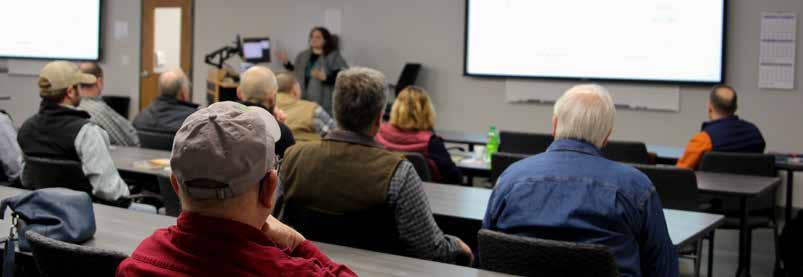
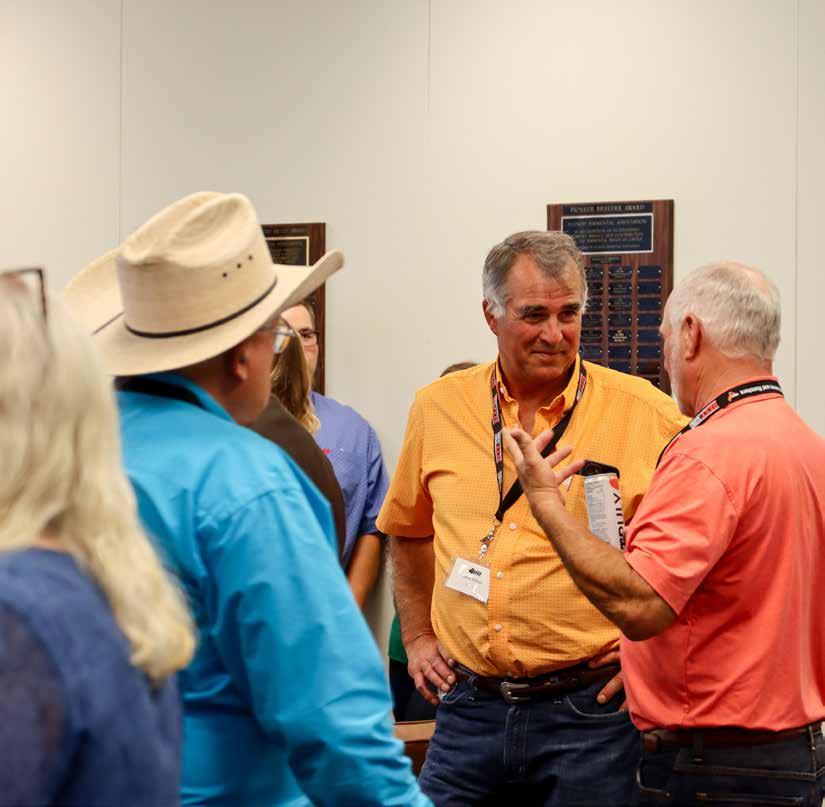
During the DuQuoin State Fair!
Friday, September 1 • 3:00-6:00 p.m.
Nearly 200 of Illinois’ cattlemen and women gathered in Springfield on June 6 for the 2023 Illinois Beef Association Annual Meeting and Awards Ceremony.
Another Illinois Beef Association annual meeting has come and gone and beef producers from across the state head home with a wealth of knowledge and outlook for the upcoming year. The Artisans Building at the Illinois State Fairgrounds was host to a full day’s event where IBA members engaged in meetings, educational sessions, networking and a night of recognition during the awards ceremony.
Retiring IBA President, Dr. Paul Walker kicked the day off with the 2023 Annual Meeting and commended his fellow retiring Board of Governors for their years of service to the association. Retiring board members included Jim Sundberg of Mendota and Andy Jones of Chapin, who have both served six years with the Policy Division, and Scott Wetzell of Tampico, who served six years as a Checkoff director and three years on the Executive Committee. IBA Executive Vice President Josh St. Peters followed with a presentation of significant program activities and achievements for IBA over the last year. St. Peters mentioned the success of new programs such as the Cattlemen Connect Education Series held in conjunction with the Beef Quality Assurance trainings across the state, a thriving and growing junior program and the new Illinois Junior Beef Tour, a growing membership that is more engaged than ever, and ever improving communications outlets, such as the Illinois Beef magazine and new e-newsletter, Cattle Concepts. Other achievements included Illinois Beef’s growing partnership with other commodity and industry coalitions, including Illinois Farm Families, the “We Are the 96%” campaign, Illinois Ag in the Classroom, and other various partnerships with Illinois Pork Producers, Illinois Corn Growers, Illinois Wine and so much more.
Dr. Buzz Iliff, chair of the IBA nominating committee, announced the election of IBA’s new President, Dave Duzan of Lexington, and IBA Vice President, Shannon Welsh of


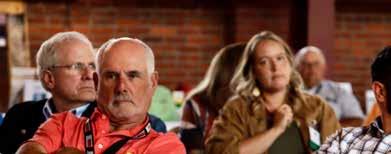


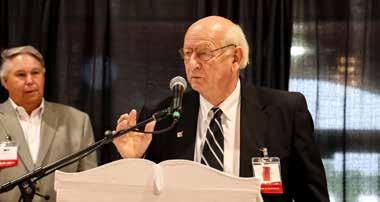

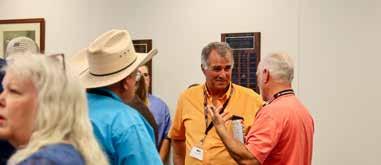

Blandinsville.
The 2023 Annual Meeting wrapped up and Master of Ceremonies, Steve Bridge of WFMB radio, guided the program into the start of the Cattlemen’s Education Series sessions, sponsored by National Cattlemen’s Beef Association and National Corn Growers Association. John Herath, Director of Communications at the United States Meat Export Federation, led the first session of the day and covered international beef trade. Herath discussed different trade relationships and programs with other countries like Mexico, China and Columbia. Beef retail promotional programs funded by USMEF are proving successful in the promotion of beef on a national retail level and enhancing the demand in export markets.
Cattlemen’s Education Series session two covered livestock marketing through cattle merchandising and fed cattle market outlooks. David Hales of Hales Trading Company traveled from Amarillo, Texas, to share with us his knowledge and outlooks of beef marketing. The final education session was an interactive panel discussion with past IBA President and practicing veterinarian, Dr. Buzz Iliff, Illinois Department of Agriculture Bureau Chief of Animal Health and Welfare, Dr. Staci Slager, and Fairview Sale Barn’s Laura Fidler. The three engaged in conversations surrounding cattle identification and technologies and more specifically, electronic identification devices. Jamie Willrett, IBA member and producer from Malta, who is also on the board of U.S. CattleTrace, gave an update on their cattle identification technology.
Following the excitement of the three Cattlemen’s Education Series meetings, the IBA welcomed everyone to the office located across the fairgrounds in Building 30 for tours and a happy hour sponsored by Farm Credit Illinois.
The day concluded with the 2023 IBA Awards Ceremony, where the association recognized several valued members and their achievements. The inaugural Beef Leadership Academy class graduated from the program and helped welcome the new BLA class participants to the program, turn to page 24 to meet them. Illinois Beef Foundation named the 2023 Foundation Scholarship recipients, along with hosting their Silent Auction to raise funds for the scholarship program. For the first time ever, Illinois Beef recognized a “Valued Industry Partner.” The award has been developed to recognize industry professionals and business partners who go above and beyond, putting their time and talents to work in support of the association and its missions. The inaugural VIP recognition was given to Dave Wilcox of Kent Nutrition Group. IBA presented the 2023 Membership Awards to the following individuals and families:
Outstanding Junior Member of the Year went to Paige Lemenager of Hudson.
IBA Member of the Year went to Betsy Pech of Lincoln. Environmental Steward of the Year went to the McManaway Family of Altamont.
Commercial Producer of the Year went to Jakobs Bros. Farms of Sterling.
Seedstock Producer of the Year went to Cardinal Cattle Company of Wyoming.
Farm Family of the Year went to the Andras Family of Andras Stock Farm in Manchester.


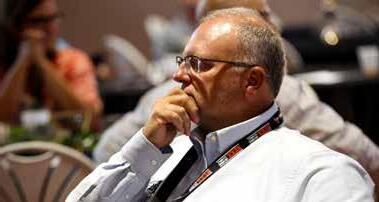



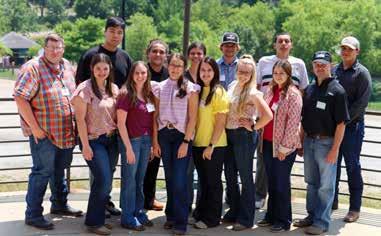
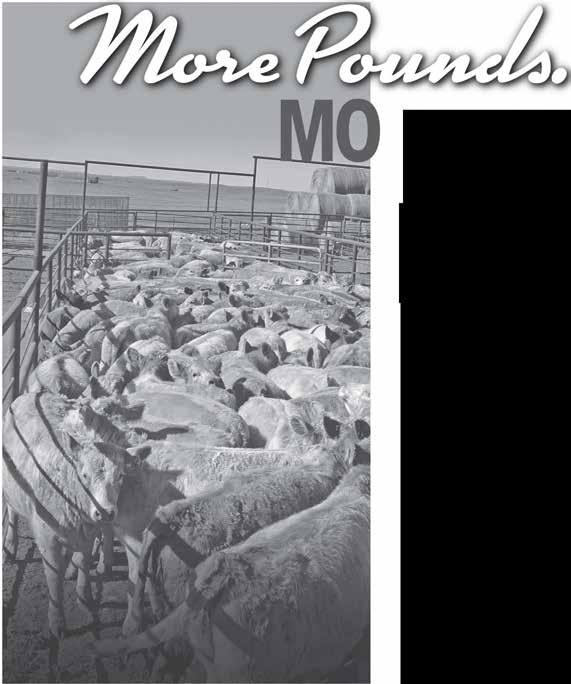
Illinois Charolais Association Officers
President: SharleneBullard-309-444-4304
VicePresident: MarlaTodd-217-840-5949
Secretary/Treasurer: RobbCreasey-309-254-3223
Members:
LaFraiseFarms,Flanagan
DaleBertsche-815-674-4419
SteveBertsche-815-674-2395
BertscheFarms,Flanagan
TroyBertsche-815-674-1244
BewelyFarms,YatesCity
BeauBewely-309-358-1434/309-208-0786
Breedinggoodcattleisn'tcomplicated. Cattle feedersgiveustheultimatereportcard. AccordingtoJaredWareham,TopDollarAngus, "Nootheroptionoffersthegreatestterminal crossbreedingvaluefromtheranchthroughthe feederlikeareallygoodsetofsmokesorbuckskins thatareatleast 50%AngusorRedAngus."

BullardCattleCo.,Cornell
PaulBullard-815-343-9380
SharleneBullard-815-343-9381
CreaseyCharolais,Macomb
RobbCreasey-309-255-7799
D-Mar-MacCharolais,Warsaw
SamZumwalt-217-256-4619
TomEngel,Flanagan-815-674-5140
GrandViewFarm,Hanover
DonKautz-815-591-3766
GroveCharolais,Metamora
KeithGrove-309-222-0287
GrusyBros.,Gridley FrankGrusy-309-747-2696
K&DCattle,Elizabeth Kelley-815-275-8904 Devin-815-858-2318

Wayne&DianeMoore,Piasa 618-410-3308
Craig&LisaNafziger,Stanford 309-379-2226
NordFarms,Bloomington RonNord-309-828-1448
Ellen&JerryCassady-309-212-0488
Eric&SamanthaNord KarlMessman
Rob&LucyNord,Clinton-217-935-2656
SJLivestock,Pontiac Steve&JulieRapp-815-712-5665
TCCattleServices,Vandalia DougThurnau-618-604-4714
WGBCharolais,LondonMills 309-251-1485
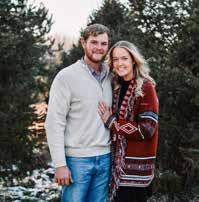


Petersburg
Dan and Betty Haynes raise cattle, corn and soybeans in Menard county. Dan hails from a cow/calf operation in the hills of central Missouri and Betty from a grain farm in Oakford. The pair met at the University of Missouri where they both received degrees in agriculture. Since marrying in 2017 and returning to central Illinois they have been actively working to expand their cattle feeding operation. Most recently, the Haynes family welcomed their daughter, Clare, into the world in October 2021. In addition to helping on the family farm whenever she can, Betty is also employed by Farm Progress as the associate editor of Prairie Farmer magazine.
Sherman
Dustin is a third-generation row crop farmer that is actively building a small beef cattle operation to diversify the family farm. Dustin spent three years dipping his toes into the stocker and cattle feeding industry. In his fourth year of involvement in the Illinois Beef industry, Dustin is looking forward to breeding a small number of heifers and growing within the seedstock industry.
Lincoln
Josiah’s passion for the livestock industry, like many, started at a very young age. Josiah has progressed through years of buying and showing shorthorn cattle. He now focuses on a small breeding base and marketing both show projects as well as freezer beef to local customers. Josiah serves on the Logan County Calf Scramble board and is active in the Heartland Beef Alliance affiliate. In addition to his own operation, Josiah frequently helps neighbors doing artificial insemination and general cattle work.
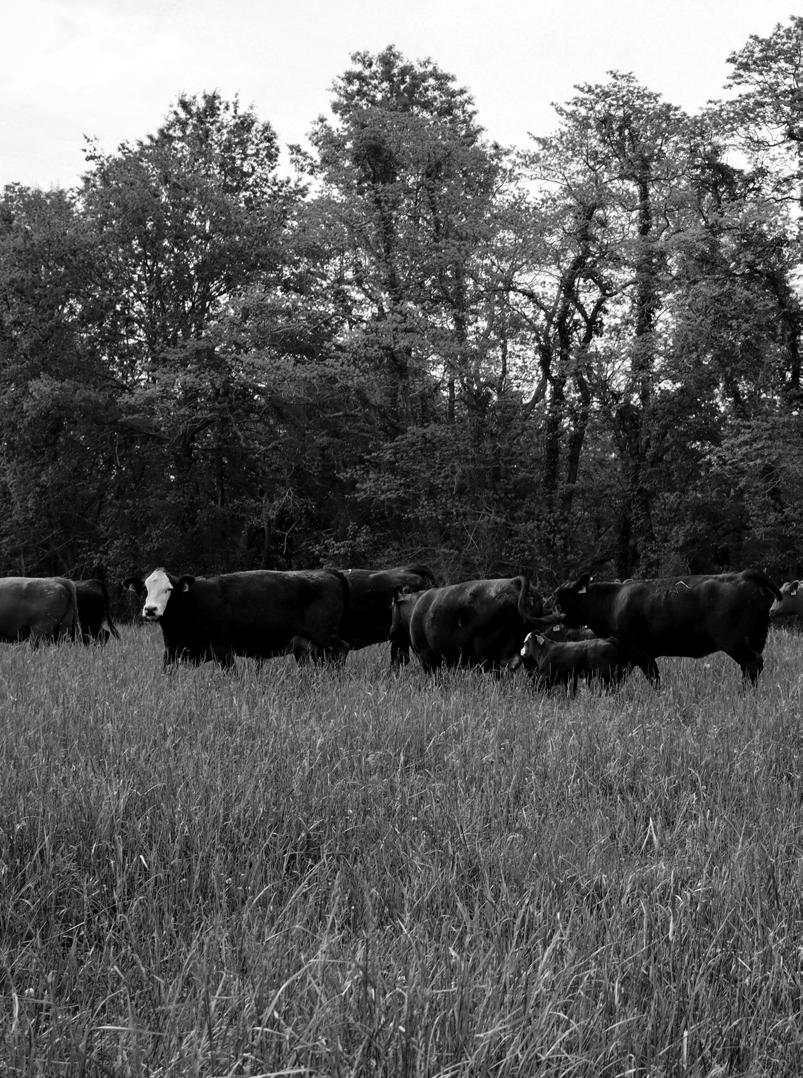

Urbana
Jackson is the assistant manager of the University of Illinois Beef and Sheep Field Laboratory in Urbana. He coordinates the day-to-day operations of the farm including feed management, ensuring animal health and welfare, and helping facilitate various research projects on the farm. Jackson is also pursuing a master’s degree in ruminant nutrition part-time while managing his full-time farm duties.
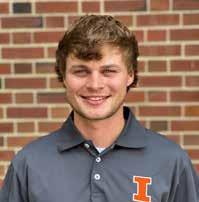
Taylorville
Logan is a full-time employee for the Illinois Farm Bureau, working as the Advertising Sales Representative. In addition to his full-time employment, Logan spends his spare time raising directly marketed feeder cattle. Logan became interested in beef cattle working alongside his uncle on his cow/calf operation.
Two years ago, Logan and his wife purchased a ranch and have since built a reputable business selling Maine-Anjou and Maine-cross freezer beef to his family, friends and his local community.
New Windsor
Katie Spivey grew up showing Simmental cattle, playing sports and helping on her family farm. Katie is a former IJBA junior board member and Illinois Jr Simmental Association board member. Katie’s show cattle experience helped her build the foundation of her herd. She currently works for Country Financial as an Insurance Agent where she helps farmers, business owners, and homeowners protect what matters to them. When she is not working or coaching basketball, Katie is likely helping on her family farm or her husband, Brad’s, family farm.
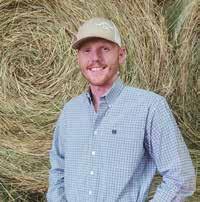

Danvers
Leslie’s connection to the livestock industry runs deep with several generations of beef producers. Like many, her involvement starts at the eligible show age of eight. As she continued through her show career, her love for the agriculture industry, specifically beef production, grew. She has been a long-time member of the Illinois Beef Association and even served as an Illinois Junior Beef Association board member including, President and District Representative. As Leslie aged out of junior programs, she has continued to be involved in the beef industry through her family’s operation and advocating for the industry.




IBA Environmental Steward of the Year award winners, Aaron McManaway and his family, use resources of both family and land to prepare for the next generation.
by Olivia Hoots
Those making their living as stewards of land and livestock have often been asked one specific question. When did you know you wanted to do what you are doing today? For IBA Environmental Steward of the Year Winner, Aaron McManaway, who won the award alongside his family, only his mother, Rhonda McManaway, can give the most honest answer. She remembers her father buying Aaron a little pedal tractor – you know the one – similar enough in looks to a real tractor, but small enough to make little ones believe they are really making a big difference because it is “just their size.”
“He would go out and try to farm in the ground dad was farming on, he would have something behind him, peddling through the dirt,” Rhonda says. “We have pictures of him out hauling manure and trying to shovel. He has always loved the farm.”
The beginning of Aaron and his family’s journey to how they raise cattle today is like many in Illinois. He had his first cow-calf pair just out of high school, but it took a little while to start his own operation. The farm where they are today has always been a family operation, dating back to the 1920s when their family bought a farm across from the land they own now.
Rhonda remembers a variety of breeds the operation cared for throughout its history, from red cattle in 1945 to Angus, and now finally Sim-Angus today.
Aaron’s aunt and uncle, Marty and Butch Poynter-Barnes joined the farm about forty years ago.
Marty spoke with her father year’s ago about the future of the farm. “Aaron is looking to buy some land; why don’t we sell him the pasture?” she said in speaking with her dad.
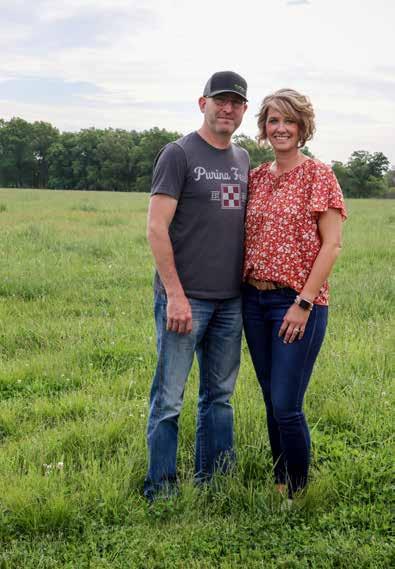
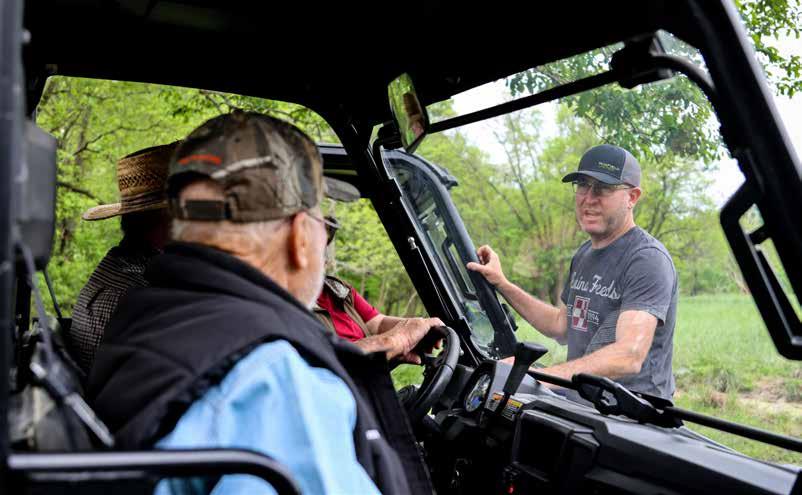
Now, the operation manages 50-80 cows, 750 acres for row crop and 150 acres which Marty and Butch bale, plus 150 acres of pasture land. Aaron and Marty own and take care of the land together.
“It needed to stay in the family, and that is what dad wanted more than anything,” Marty says.
The transition toward Aaron having a more prominent role in the operation brought with it changes in land and grass management.
Fence upgrades and rotational grazing came when Aaron “took over.” He desired to pursue some environmental stewardship programs and manage his cattle while also managing the grass, such as with the USDA Environmental Quality Incentives Program.
He started their breeding program in 2012 bringing in Simmental genetics and some specific electric fencing projects. They worked with Bonner Fence Company to install high tensile fencing on the environmental stewardship side of
the operation.
There are also a few practices they have used to help conserve the quality of the land. They currently take soil samples of all the pasture and hay ground, have a fertilizer program to give a kick start to the grass and manage manure to utilize in the row crop operation. Another program allowed them to keep animals out of highly erodible areas.
“If the generational passing of the torch does not continue to conserve their land to be able to take care of the land, watch for erosion, add waterways where they are needed and take cattle out of highly erodible areas as needed, I do worry about what it will look like a generation or two past me,” Aaron says. “I think that was the inspiration for using the rotational grazing.”
Rotational grazing has improved their overall efficiency. Benefits include a decreased number of flies and the ability to clip and treat areas when cattle are grazing another area.
“I firmly believe that rotational grazing, the clipping and
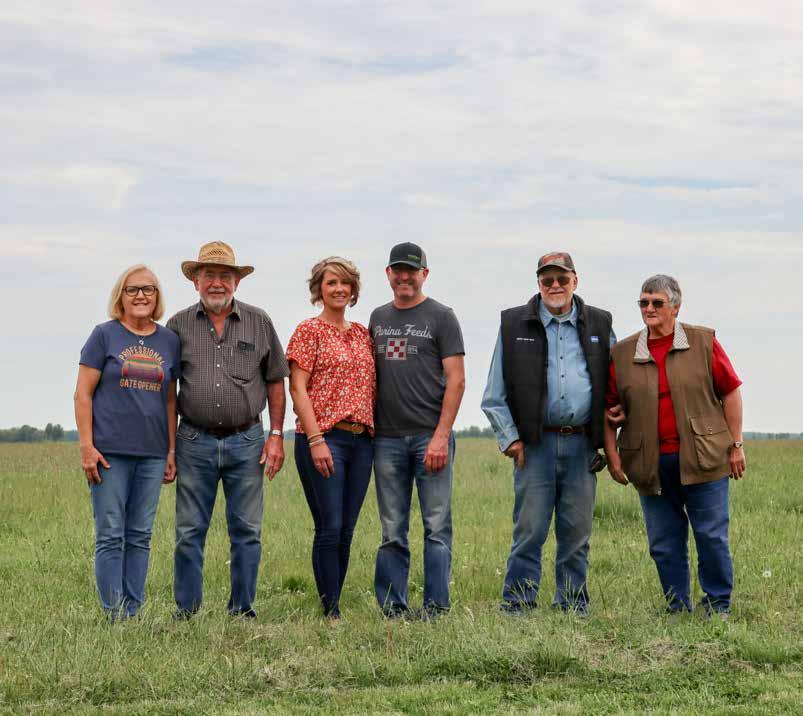
manicuring of the pastures has helped with a lot of other issues we would historically have in our cattle, especially in the heat of the summer,” he says.
In terms of genetics, Aaron credits the Alwardts’ Diamond A genetics. He says brothers, Justin and Tyler have guided him when choosing replacement heifers.
Aaron knew the Alwardts from being a part of the same community and attending church together, but their relationship in the cattle business started when Aaron was looking for advice. They would help him make culling decisions and help him choose replacement females.
“We always knew what he was looking for and tried to steer him in the right direction,” Tyler Alwardt says. “Every year they get better and better.”
According to Tyler, Aaron’s herd is almost to the point of problem free in terms of utter and hoof quality, giving Aaron a really strong herd.
In managing the day-to-day operation, Marty and Butch look over the crops, tillage and grass, while Aaron’s mom and dad, Rhonda and Cleo, Aaron’s dad, help feed heifers and move cows from pasture to pasture in the summertime. Aaron also has a full-time job with Winfield United, so he is very appreciative of the work his family member’s give. Even so, work on the farm is his favorite escape.
“Aaron does a lot of telling us what needs to be done,” Marty says. She’s happy living this life doing what she has always wanted to do.
Everyone is pleased Aaron was willing to succeed his family, and even more pleased with the improvements to prepare the farm for the next generation.
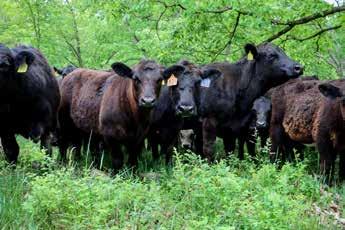
“I am glad to see my kids all close and interested in farm life,” Rhonda says. “They thanked us for bringing them back to the farm.”
Aaron acknowledges and contributes his own success to each of them. The opportunities they gave him make him think of his own family – his wife of 25 years, Mindie, and their three kids, Ellie(19), Aiden(17) and Cooper(13), who also works with the Alwardts – each of which give him a strong outlook for the future.
“We are watching the small family farms disappear, but in the county where I live there is still a passion to keep the family farms alive,” Aaron says. “Knowing my father and mother, and aunts and uncles, grew up on farms, I have made it my passion to keep this going and to have the same opportunities for my own children, nieces and nephews.”

September 8-9 Farraway
20534 E Fairfield Road Bluford, Illinois, 62814
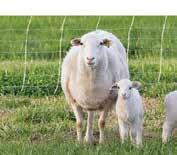
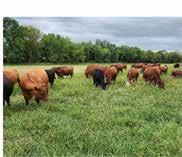
September 15-16
Farms 18 N 681 IL-31 Dundee, Illinois, 60118

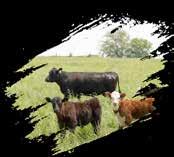

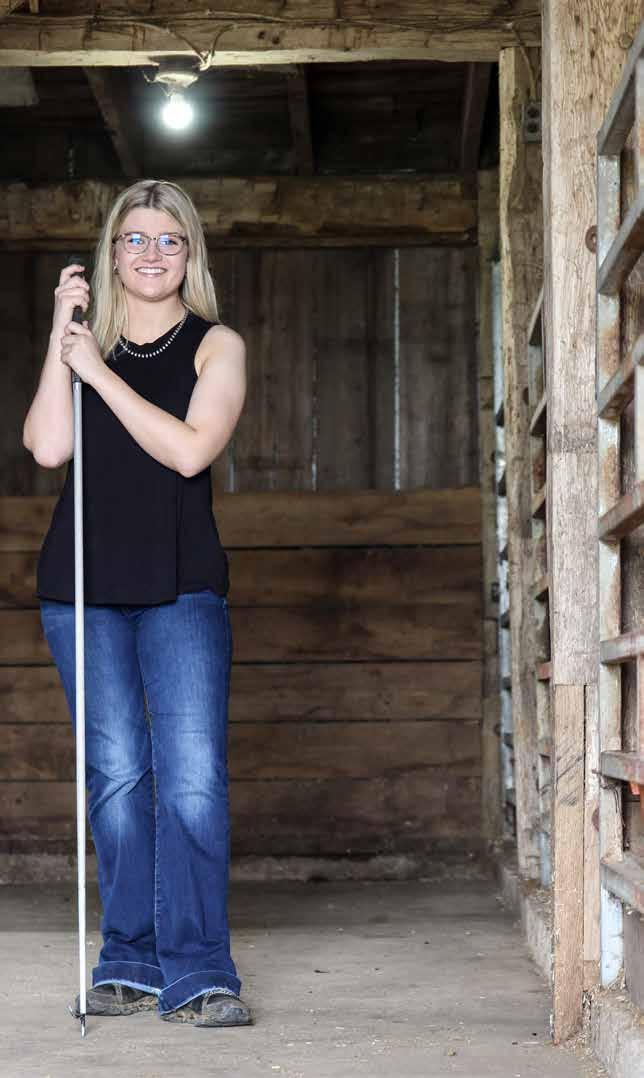
by Sara McClendon
Winning a national show championship, receiving awards across multiple breeds and serving in leadership positions for various beef industry organizations takes a certain amount of drive and determination. Add in the fact that it was all accomplished as a young adult, and it is clear that 19-year-old Paige Lemenager, the 2023 recipient of the Outstanding Junior Member of the Year from Illinois Beef Association, is blazing a path for a strong future in the industry.
The Outstanding Junior of the Year award recognizes a member of the Illinois Junior Beef Association who shows integrity, leadership and dedication to Illinois’ beef cattle industry. Three areas where Paige, who serves as vice president, has shown up and stood out. Combine that with a humble attitude and a commitment to helping younger members of the industry, and it is easy to see how she has already made a name for herself in the beef industry.
Paige currently attends Lake Land College where she competes on the livestock judging team, an endeavor she began in high school. She also is the Lake Land College Collegiate Farm Bureau President and represents the college as a student ambassador. She has served in leadership positions in 4-H and FFA as well.
However, Paige is quick to point out that her success did not happen overnight. It took years of practice to hone her craft and reach the level she is at today. And it all started at home, on the family’s cattle operation in Hudson.
Lemenager Cattle began as an Angus operation in 1998 when Paige’s parents, Luke and Stacy Lemenager, purchased their first heifer together. It is a purebred operation, utilizing IVF with a progressive embryo herd.
Paige spent her childhood working alongside her parents and learning the ins and outs of a successful beef operation while they balanced their professional careers. As she worked in the family business, she made a point to understand different pedigrees. She also observed her parents’ passion for the beef industry.
In 2015, the family decided to expand to a second breed and introduce Herefords to diversify the operation and for Paige to show in addition to Angus heifers. Plus, as Luke says, the Herefords made it easy to distinguish which of the herd was his daughter’s.
After arriving home late one evening, Luke encouraged Paige to go out to the barn where a Hereford heifer was waiting for her.
“That was one of the most exciting moments for me because I knew it was the beginning of a new chapter,” Paige says.
For not having grown up raising Herefords, Paige said the industry welcomed her with open arms. She credits this to the strong community the beef industry has as a whole.
Luke and Stacy both grew up showing cattle and they passed
that passion down to their daughter. Stacy showed steers, and Luke and his brother, Chuck, showed breeding stock. At the time, they did not realize just how competitive their future would be in the show ring. However, Luke says that from a young age, Paige always gave her all to everything she did.
“When she was little and playing softball, she played with all her might,” Luke says. “When she played basketball in junior high, she gave 100 percent. She completely committed to everything she did.”
He says when Paige entered high school, she quickly realized that to give cattle the time and attention required, she would need to narrow her focus, which she did by continuing to show and becoming a leader in FFA.
“One thing we have always taught her is it only takes a little bit more effort to do something right,” Luke says. “We did not push her, but she realized if she was going to be competitive, she needed to focus on this. She saw a path to success and she has worked really hard.”
Luke and Stacy are Paige’s core role models in her life. They work together to accomplish their goals, and have taken on leadership roles in the industry that stood as a shining example of what it means to give back to others.
Paige’s extended family has also helped guide her way. She says watching her dad and her Uncle Chuck’s drive and optimism has influenced how she navigates her way through the industry. Her cousin Gabrielle also won the Outstanding Junior of the Year Award, which helped inspire Paige as well.
Paige says her show journey began at the county fair. Before ever stepping foot in the show ring, she was observing and learning from people who had built a strong reputation. From there, she spent countless hours working with heifers, leading to top awards in both Angus and Hereford breeds.
Then, at the Central Illinois Angus Preview Show and Illinois Junior Angus Field Day in Bloomington, Paige told her parents she was ready to try and hit the national stage and earn a spot to compete at the National Junior Angus Showmanship Contest. With only one shot to get it right, Paige signed up for the competition, despite the fact that many people wait until they are 20- or 21-years-old to compete at that level and she was just 18.
“I didn’t necessarily want to be a trailblazer,” Paige says. “I just wanted people to feel that they could confidently pursue that challenge and contest at any age.”
Despite her history of many shows and many wins, the national ring offered a completely unique feeling to Paige.
“Being there in Kansas City was a surreal feeling,” Paige says. “Making top 15 was my goal. I had no idea what was to come after that because there were 15 people that I was standing alongside that I can confidently say I would put on the end of one of my heifers.”
Walking out of the ring, Paige was surrounded by her support system including mentors who had guided her along the way, and mentees who she had helped. She says being surrounded by people of all ages who supported her was an emotional moment as she was named the 2022 National Junior Angus Showmanship Winner.
Each accomplishment in showing serves its own meaning to Paige. Every award represents a different animal that she worked countless hours with, building a bond and



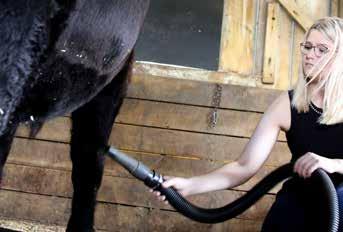

relationship. Plus, with a team of supporters backing her up, it is clear that relationships are what are most important to Paige.
“When I step into the show ring, no matter how it goes, I know that I am heading in there with a team behind me and a heifer I am proud to stand by,” Paige says. “That is what I get the most joy out of in the big picture.”
Paige and her family also prioritize bringing show heifers back into the herd. Paige says it is an amazing feeling to see a former show heifer become a donor. It is the relationship with the animal that means the most to Paige, and she gets a sense of pride every time a heifer is recognized because it means people believe in her, her family and in their genetics.
Paige credits the Illinois Junior Angus Association and Illinois Junior Hereford Association for laying the groundwork for interest and skill in leadership. She also says her involvement in the Illinois Junior Beef Association has been a rewarding experience.
“Being able to connect with people who come from different parts of the beef industry is what I really enjoy about the Illinois Beef Association,” Paige says.
Networking with others in the industry is important to Paige. It is the sense of community she gets from others in the industry that keeps her involved and leading the way. Her involvement in beef associations have also provided insight on how impactful older members can be in shaping younger members on their own journey in the industry.
“There is always someone looking up to you,” Paige says. “That is a very humbling feeling. It is a lot of pressure in some ways but I enjoy that. I enjoy serving as a role model and I hope I make people proud in my endeavors and in the way I carry myself.”
Without a doubt, Paige has made those in her life proud. Luke says that in the midst of keeping busy with showing and the business, he is grateful for opportunities to stop and reflect on all Paige has accomplished.
“We are grateful for this recognition from Illinois Beef Association. It was a pleasure to have them come to the farm and interview Paige and allow us to step back for a minute and appreciate all that she has accomplished and the memories we have made along the way. We are so very proud
of her,” Stacy says.
While many would consider Paige and her peers as the future of the industry, Paige knows that it is never too soon to start mentoring the next generation of leaders.
The Pen-to-Pen program through the National Junior Hereford Association is of many opportunities Paige has used to connect with younger showmen. The program connects a younger member of NJHA to a mentor during the Junior National Hereford Expo, but the mentoring does not stop once the event is over. Afterwards, mentor and protégé continue to communicate through written correspondence the rest of the year, creating a lasting bond and a fantastic opportunity for younger members to learn and grow.
However, mentoring is not always through an official program. While at shows, Paige makes a point to connect with younger participants to share advice and encouraging words. She understands they are watching her, and other older kids in the show ring, just like she did when she was young.
The advice she would give to younger participants is

simple: Take opportunities when they come your way and do not be afraid to step outside your comfort zone.
“I have to brag on my parents for this one,” Paige says. “There was never an opportunity they let pass me by. They always pushed me to pursue opportunity because that is what grows you as an individual, grows your network and builds your legacy.”
Paige encourages younger members of the beef industry to not be afraid to take on a leadership role. It might be scary at first, but networking is key to learning and becoming part of the industry. When attending shows, Paige encourages others not to just sit at stalls with friends, but to go and meet new people. She says building a network and being active in organizations like Illinois Junior Beef Association is crucial to building a solid foundation in the industry.
Paige points out that there were many organizations, foundations, companies and individuals who have made investments into her and her peers’ future in the beef industry.
“It is such a strong industry not only professionally, but socially,” Paige says. “You create this bond with people that is like no other.”
As Paige moves into her sophomore year, she keeps her studies at the top of her priority list. She is passionate about agriculture economics. She has plans to obtain her bachelors and has her sights on law school to receive her juris doctorate degree. Ultimately, she wants to serve as an estate and succession attorney, giving back to those in the ag industry who have helped her.
With core values of staying disciplined and being open minded, it is a safe bet that Paige will remain a fixture of the Illinois ag community. It is her commitment to the beef industry that gives hope for the next generation of leaders.
“I plan to stay in the industry for the rest of my life,” Paige


says. “I look forward to having a family of my own in the beef industry and raising cattle. I want to come back to McLean County. I want to stay active in the Angus and Hereford associations. That is where my passion lies and I hope that is where my future lies as well.”



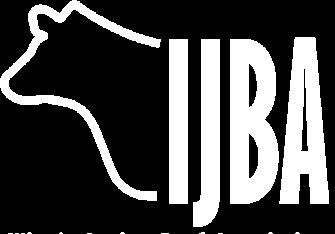
A. Exhibitors must be over 8 and under 22 years of age as of January 1, 2023.
B. All animals must have health papers from a veterinarian.
C. All entries must be registered in the name of the exhibitor, who must show the heifer, unless other arrangements have been made with IJBA Jackpot Show staff.
D. This is an IJBA Points Sanctioned Show.
HEIFERS AND COW/CALF PAIRS
A. Registration papers are required.
B. Registered heifers will be shown by age, youngest to oldest.
C. Heifer and cow/calf classes will be offered for any breed that has at least five head. Registered females with less than five head per breed will show in AOB.
A. All entries will be made online this year at www.illinoisbeef.com. Online entries are due Friday, August 4, 2023, at 11:59 p.m. at the rate of $25 for each heifer and/or cow-calf pair. Late virtual entries will be accepted until Tuesday, August 8, 2023 at 3:00 p.m. at the rate of $45 for each heifer and/or cow-calf pair.
B. All questions can be directed to the Devin Bollman by calling 217-787-4280 or by emailing devin@illinoisbeef.com.
C. All exhibitors must be IJBA members
D. Entry fees are non-refundable
A. All the non-Illinois State Fair cattle brought onto the fairgrounds for the Jackpot Show should be stalled in the Junior Livestock Building
B. All heifers and cow/calf pairs not showing at the ISF should arrive on the grounds some time during Saturday, August 12.
C. When your breed show is completed, you are released
A. All of the entry fees will be redistributed.
A. Posted in the Junior Livestock Building Saturday, August 12, by noon.
Abusy summer of programs and events kicked off on May 31, with the first-ever Junior Beef Tour. Twelve passionate Illinois Junior Beef Association members had the unique opportunity to explore various careers within the beef industry over a two-day tour across central Illinois.
The tour kicked off at Illinois State University where participants learned about the many degree paths that exist, research opportunities and what a career in academia may look like. Prairie View Farm hosted the second stop of the tour where Alan and Theresa Miller discussed the realities of operating a large-scale cow/calf operation in central Illinois, the reproductive work they conduct on the farm and the business they have built. The Miller’s offered a unique perspective encouraging young professionals to maintain an open line of communication with their employers to discuss their likes and dislikes in the workplace.
Lexington was next on the tour map, where members learned about The Duzan Agency. Dave Duzan, IBA President, spoke to the participants about his entrepreneurial venture turned lifelong career. The Duzan Agency, an international trade insurance firm, plays a critical role in the export of livestock. Members were also able to tour Duzan’s cattle backgrounding operation and learn the importance of backgrounding cattle.
Participants then traveled to Earlybird Feed and Fertilizer headquarters in Goodfield. Several Earlybird employees talked to the Junior Beef Tour members about the process of milling feed, the company’s objective and careers within the animal nutrition sector. After a mill tour and bountiful learning opportunities, juniors got to indulge in Kamaelas Kreamery ice cream to cap off their Earlybird experience.
The final stop of day one found participants at Raber Packing Company in Peoria. Raber Packing offered members a unique look into the animal processing sector. In addition to experiencing the final link of the beef cattle industry, juniors got to sample some of Raber’s original beef stick and lunch meat recipes.
The second morning kicked off with a panel of industry professionals advising participants on resume-building tips, good interview practices and much more. A stop at Timbercrest Veterinary Services and Timbercrest Land and Livestock concluded the tour. There, members learned about work as a large animal veterinarian and good herd health practices, respectively.
These two full days offered twelve high-quality Illinois Beef Juniors a first-hand look into the many career opportunities that exist right here in Illinois.
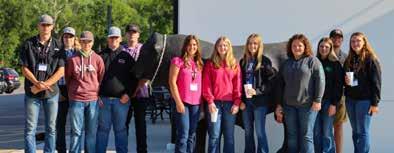
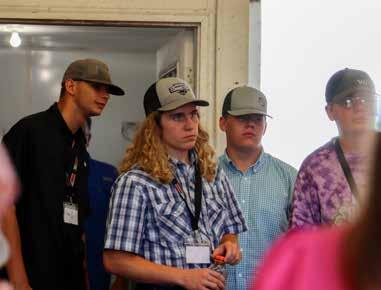






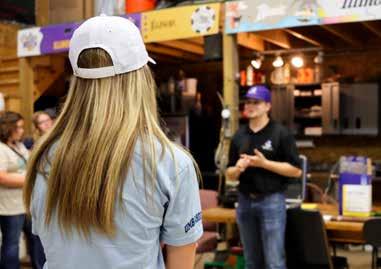
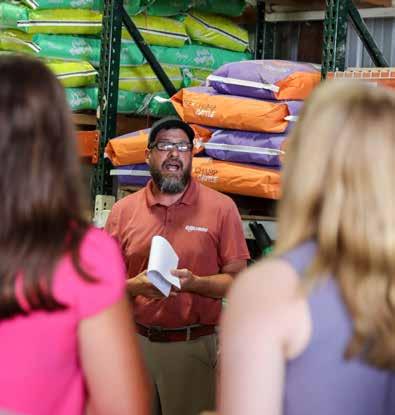
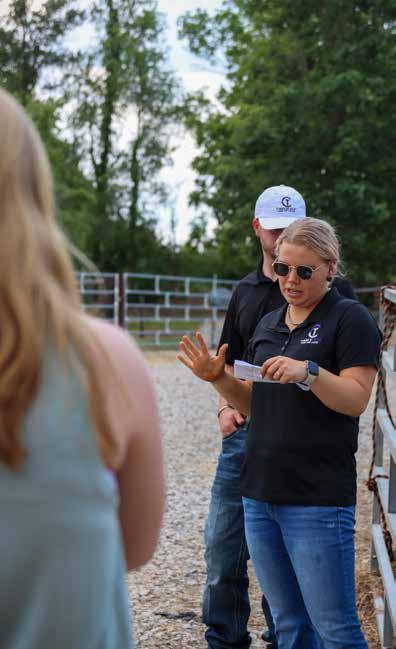

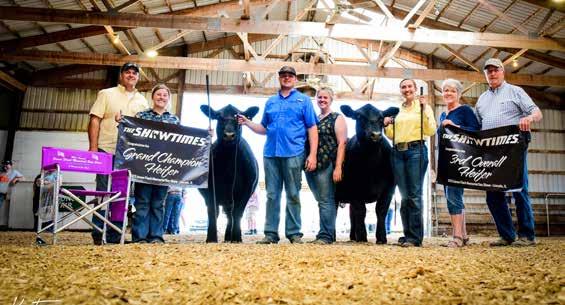
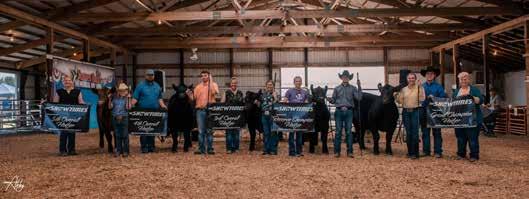
May 28, 2023
Logan FairgroundsCounty
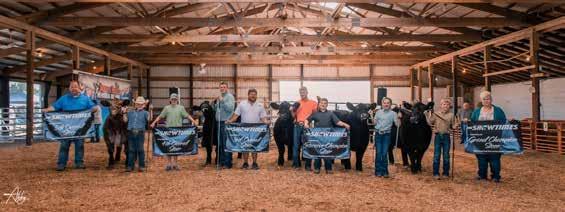
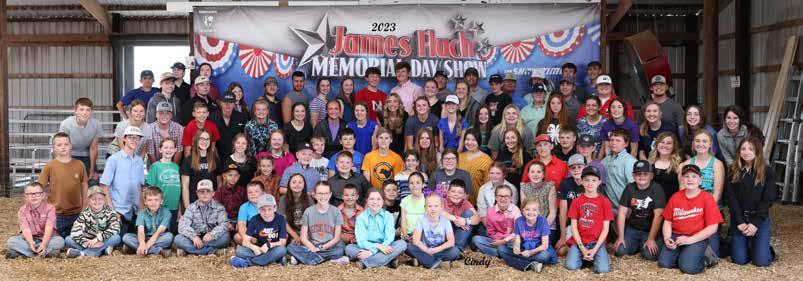

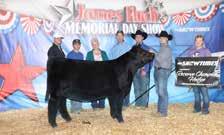
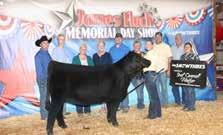
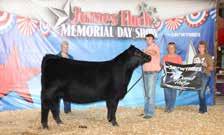


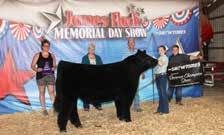
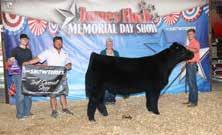
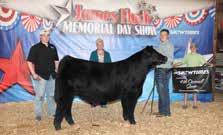
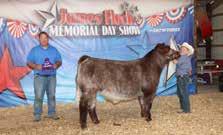
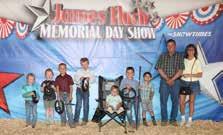


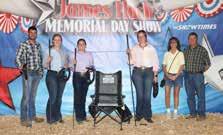
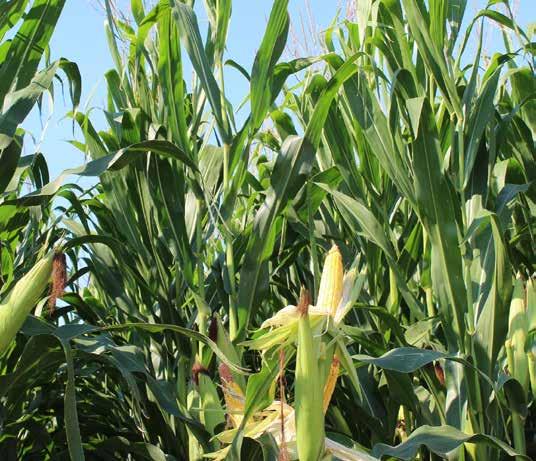

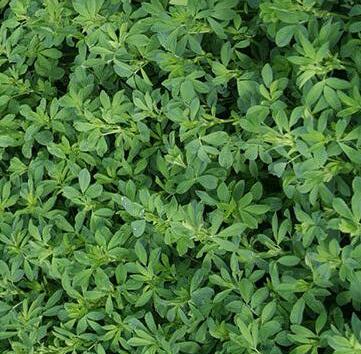



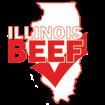


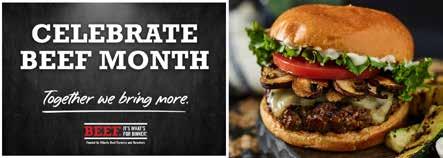
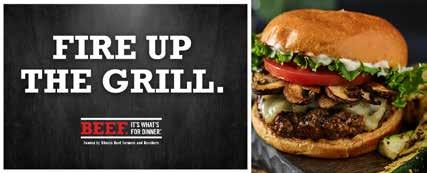

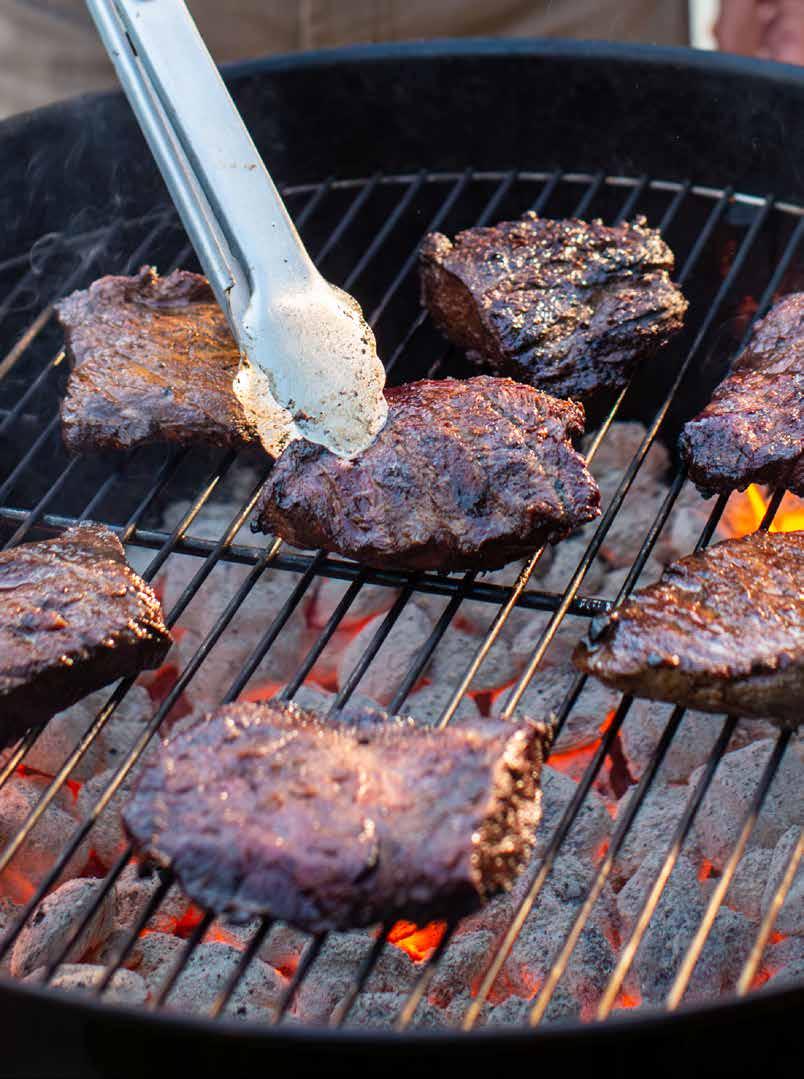
By Charlyn Fargo Ware

Grilling is one of the best things about summer – the smell of charcoal, the family times, the longer evenings, even fireflies. It is not just for holidays but a way to celebrate the everyday goodness of life.
On a special occasion or not, you are likely to find David Radwine, veteran Springfield chef, trained by the Culinary Institute of America in Hyde Park, lighting his charcoal grill in preparation of a juicy, mouth-watering steak.
“We did have a meat cookery class at the CIA,” says Radwine. “Grilling was part of the curriculum. I still remember it. As long as the grill is not frozen shut, I do not let the weather stop me.”
He has applied the principles thousands of times in his career as a chef.
Whether it is a ribeye, New York strip or filet, flank steak or tri-tip, Radwine appreciates the value of beef, whether it is grass fed or corn fed, marinated or under a rub.
“The thicker the steak, the better the result,” he said. “I personally like my steak between rare and medium rare –with salt and pepper. Salt and pepper on a steak is pretty delicious on its own.”
Radwine starts by letting his steak “warm up” at room temperature for 30-45 minutes. Meanwhile, he will start his charcoal grill, which he prefers to gas, piling the lump charcoal to make a hot spot rather than spreading the coals evenly all around. His goal is to have a place to move the steak off to the side if a flare up occurs.
“It helps control the charring, if you can control the flare-up.”
He also recommends investing in a good quality thermometer like a Thermapen to tell when a steak is cooked to the desired temperature rather than going by color.
“It is going to look more done on the outside, so the thermometer will give you an accurate picture.”
There is a new way many restaurants now cook on a grill for a crowd. They do a reverse sear where they vacuum seal the steaks, put them in a water bath, then just before serving, sear them on a hot grill.
“If you like a rare steak, you can vacuum seal it in a 120-degree water bath, then take it out and sear it on both sides.”
He often serves a grilled steak with a garlicky South American chimichurri sauce – a bit like pesto – that usually includes parsley, garlic, vinegar and spices such as salt, pepper, oregano and red peppers in olive oil.
For cuts of meat such as flank steak, tri-tip or hanger steak, Radwine prefers a marinade of olive oil, minced fresh garlic, red wine, rosemary and Dijon mustard.
“The rosemary helps counter any negate aspects of charring,” he said. “And it tastes good. The red wine helps break down the protein and gives flavor.”
What to serve with grilled steak? Grilled asparagus or whatever vegetable is in season – utilize the fire you have going, he says – a good fresh salad with arugula and a vinaigrette, sliced tomatoes with basil and mozzarella and – if you are feeling like splurging – a gratin of sliced potatoes and garlic with cream poured over and baked until tender.
“Then take a 10-minute walk after dinner,” he laughs, “to balance everything out.” (Continued)

• When marinating, a shorter time is best – 30 minutes to two hours – if the marinade has a lot of acid-rich citrus juice or vinegar. The smaller and more delicate the food, the shorter marinade time.
• After the charcoal is lit, you should not put food on the grill for the first 20 to 30-minutes. This helps to prevent flare-ups and scorching the food.
• Arrange the charcoal in the grill to be in the center of the grill or slightly off-center to one side. This will give you different heat zones on the grill. Areas of the grill further away from the coals will not be as hot.
• Pick a fresh sprig of rosemary, thyme, or another green herb from your garden. Place the fresh sprig directly on the charcoal. The green herb will produce an aromatic smoke that will add flavor to the meat.
• If you are using a charcoal grill, don’t splash water on the fire when it flares up. This will create a cloud of ash from the coals, which will catch the food on the grill. When a flare-up occurs, stay calm and simply move the food out of the area that has flared up and give it a minute to die down.
• Cook beef (and pork) over hot parts of the grill, only turning them two to four times before taking them off the grill. Rest the meat after taking it off the grill, and it will continue to cook for a few minutes, even though it is no longer on the heat.
• You can create a steak crust on a thicker cut by using high heat on the grill, coating with a dry rub and searing fast.
• To slice a skirt, flank or hanger steak, cut against the grain, in the opposite direction that the muscle fibers run.
• As you grill steak, pay attention to details. A few degrees can mean the difference between just right and over-cooked meat.
• Give steaks time to rest after cooking, at least three to five minutes after cooking. The resting process allows the juices to redistribute throughout the meat and improve flavor. It is best to let it rest uncovered so it does not steam and make the crust soggy.
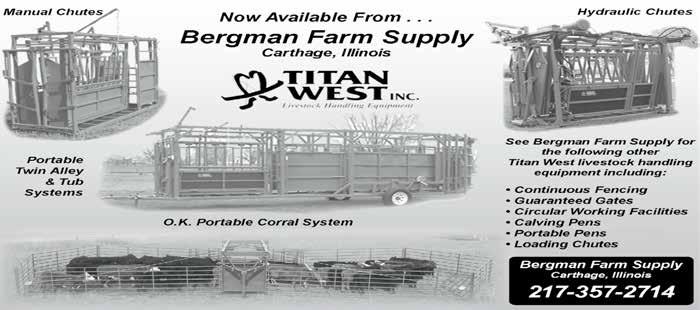


State and National Beef Promotion and Research Programs
Information is required by 7 CRF 1260.201 Failure to report can result in a fine. Information is held confidential per 7 CRF 1260.203.
Today’s Date ID Number (if known)________________________
Seller’s Name
Seller’s Signature
Buyer’s Name
Buyer’s Signature
Both the seller & the buyer are responsible for making sure that the $1 per head assessment is collected and remitted to the Illinois Beef Association.
Date of Sale *State of Origin
Number of Cattle
remitting
the
and State
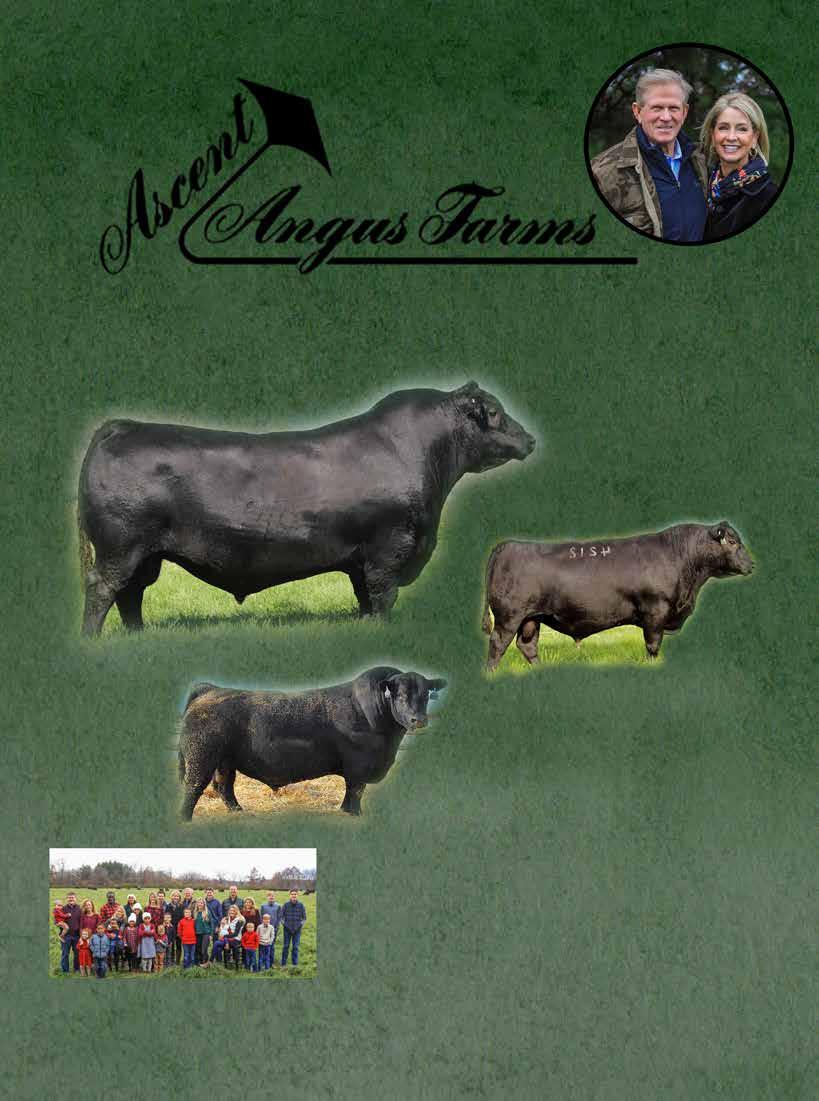







July/August 2023

President: Carla Jurgenson
Vice President: David Mool
Secretary: Clay Sellmeyer
Business Manager: Doug Turner
Past President: David Jenkins
Bureau County: John DeRycke
Central Illinois: Luke Lemenager
Illinois Valley: Open
Lamoine Valley: Tracy Rawlings
Logan County : Carla Jurgenson
Northern Illinois: Jarad Carroll
South Central: Richard Hurst
Wabash Valley: Shaye Harre
Directors at Large:
Grant Bedel
TJ Curtin
Jim Marsh
Bradley Wolter
Kyle Buetke
Jeff Dameron
Chris Cassady
Clay Sellmeyer
Dan Naughton
Greg McClure
David Mool
Bodee Schlipf
Brad Evans
To place advertisements or your latest Angus news contact:
Photo taken at Lemenager Cattle during the IBA Junior Member of the Year video shoot. Paige Lemenager received this year’s award.
William Miller, Gridley, Illinois, has earned the National Junior Angus Association’s Silver award, according to Caitlyn Brandt, events and junior activities director of the American Angus Association® in Saint Joseph, Missouri. Miller is the 13-year-old son of Alan and Theresa Miller and attends El Paso Gridley Middle School. He is a member of the NJAA and the Illinois Junior Angus Association, where he serves as director.
He has participated in local, state, regional and national shows and showmanship contests. At the National Junior Angus Show, Miller participated in the team fitting contest and the All-American Certified Angus Beef® Cook-Off. He also participated in the mentoring program in 2018. In 2020 he attended Angus Convention in. He has consigned cattle to the Prairie View Farms Sale.
The Silver award is the second of three levels of the NJAA Recognition Program that began in 1972. Junior Angus breeders must apply for the award, then meet point requirements in many areas of participation before receiving the honors. Applicants are evaluated in areas of junior Angus association activities and leadership, participation in showmanship, contests and shows, using performance testing to improve their herd and their progress in producing and merchandising Angus cattle. The NJAA promotes the involvement of young people in raising Angus cattle, while also providing leadership and self-development opportunities for the nearly 6,000 active members nationwide.

Gary Dameron, Lexington, Illinois, won pioneer breeder at the 2023 AllAmerican Angus Breeders’ Futurity Roll of Victory Show, June 11 in Louisville, Kentucky. Pictured from left are Tom Burke, show chairman; Miss American Angus Kelsey Theis; Gary Dameron, recipient; Paul Hill, vice show chairman; Anne Patton Schubert, executive show committee; and Jamie Smith Nicholson, show treasurer. Photo by Next Level Images.
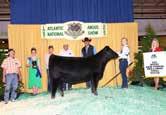
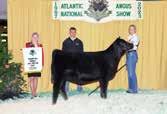
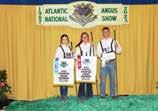
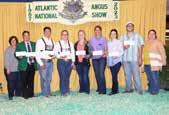


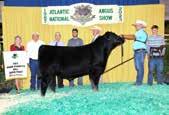
Bloomington, Ill. | June 1-3 | Judge: Steve Patton, Ind.
Cindy’s
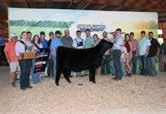





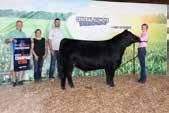



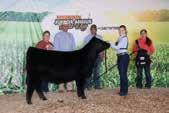
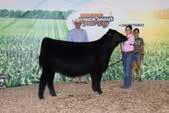

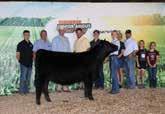

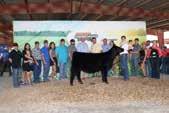
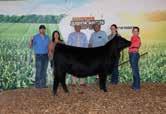
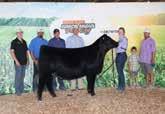

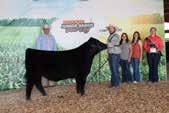
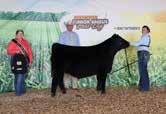
Reserve Champion Steer
Cheyenne Handsaker
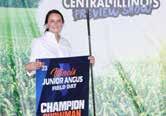
Champion Intermediate Showman
Addison Bartlow

Champion Pee-Wee Showman Tess Renfrow
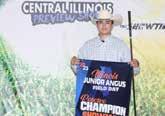
Reserve Champion Intermediate Showman Caden Crain
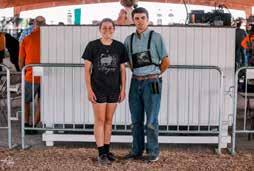
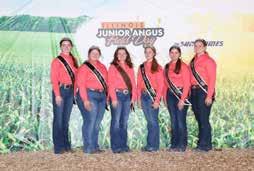
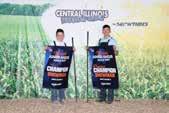
Junior Division A Showman
Champion Hank Renfrow
Res. Champion Logan Suits

Senior Division Champion
Champion Ashlyn Mool
Reserve Champion Cody York



Junior Division B Showman
Champion Macie Carroll
Res. Champion Blake Wolter



Louisville, Ky. | June 10-11 | Terry Burks, Bowling Green, Ky. & John McCurry, Burrton, Kan.

3rd Overall Bred & Owned Champion Female
Dameron C-5 Lucy 2242
Owned by: Anne Dameron
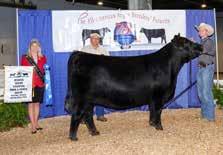
Bred & Owned Reserve Senior Champion Female
Allstar Barbara 154
Owned by: Luke Zimmerman
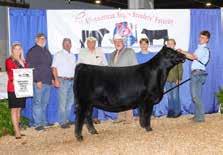
3rd Overall Owned Champion Female
BOY Proven Queen 291K
Owned by Jack Dameron
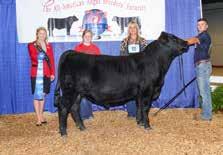
ROV Reserve Senior Bull Calf Champion
Destinys Back In Black 320
Owned by: Morgan Hutchins
Photos by Next Level Images
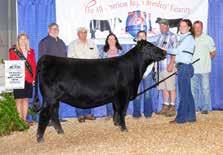
Fourth Overall Bred and Owned Champion Female
Shore Acres SCC Phyllis 227
Owned by: Ella Brooks
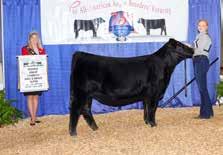
Bred & Owned Reserve Junior Champion Heifer PVF Blackbird 2061
Owned by: Ashton Dillow
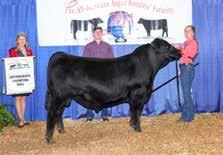
ROV Intermediate Champion Bull
W G A Maverick 12K
Owned by: Holly March

ROV Grand Champion Female
BOY Proven Queen 291K
Owned by: Jack Dameron
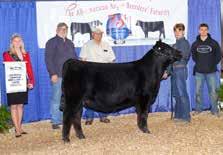
5th Overall Bred & Owned Champion Female
Dameron Primrose 2146
Owned by: Max Dameron
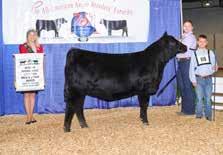
Bred & Owned Reserve Intermediate Champion Heifer BNF Saras Dream 2210
Owned by: Claire Kuipers
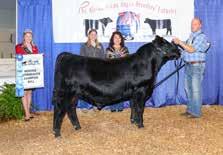
ROV Reserve Intermediate Champion Bull
Destinys Prime 325
Owned by: Morgan Hutchins
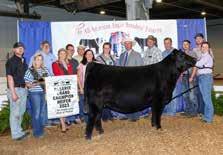
ROV Reserve Grand Champion Female
SCC CB Phyllis 1114
Owned by: Ella Brooks
Share your current BQA certification for a chance to win money for your state or regional Angus association.
By Morgan Boecker
You can’t easily quantify the days and nights tending to each new calf, or livestream to prove each animal gets the correct vaccine in the right place. You can’t show how it all works to protect the herd from ever having a bad day.
But it’s that level and attention to care that consumers are curious to know.
“The Certified Angus Beef ® brand built its reputation on taste,” says Bruce Cobb, Certified Angus Beef (CAB) executive vice president of production. “Now consumers are looking for added attributes—they want to know how cattle are raised, too.”
Taste still leads the way, but marketing details about production let consumers who buy CAB feel good about taking it home to their families, he says. Today, their biggest concern is animal welfare.
Accredited programs such as Beef Quality Assurance (BQA) help verify that commitment to care with consumers.
That’s why CAB is challenging Angus members to share their current BQA certification for a chance to win up to $2,000 for their state or regional Angus association. Until June 30, BQA or equivalent certificates can be submitted at CutTheBull. info/challenge. To be eligible, a single association must have at least 30% of its members participate. Find all of the challenge rules and how to win online.
CAB is uniquely positioned to share production practices with licensed partners who sell and serve the Certified Angus Beef ® brand. Such sharing creates many passionate brand advocates, curious and eager to understand the level of care ranchers give every day so they can share that story with their customers. Of course, it’s not feasible to take every beef consumer to the ranch for the same experience.
“BQA provides cattlemen a framework to capture production information and share it with consumers,” Cobb says. “Surveys show that when consumers learn about BQA, their trust in producers grows.”
That’s why the CAB “Cut the Bull” campaign asks Angus cattlemen to share proof of their BQA certification with the brand. It lets CAB cut through the noise and spotlight the truth about animal welfare at the ranch.
“Cut the Bull shows producers a simpler way to tell their story,” Cobb says. “But it also tells beef buyers and sellers what producers have always done for effective cattle care.”
Get certified online at BQA.org or find a training near you. Getting certified online can be done at your own pace in a few hours that can be broken up over days.
If you’ve completed BQA training in the past, check to make sure it is still current. BQA certificates expire every three years, making it a continuing opportunity to learn the latest best practices backed by science and common sense, Cobb says.
It’s a simple, free and effective way to protect your reputation in a way that resonates with every segment of the beef industry.
Even cattlemen not affiliated with an Angus association can submit a certificate for a chance to win each month. Certified Angus Beef also draws from the list of submitted certificates to win a new vaccine cooler.
Learn more and share your certificate at CutTheBull.info.

Luke, Stacy & Paige
703 Hinshaw Rd.
Hudson, IL 61748
Luke Cell 309-261-0752
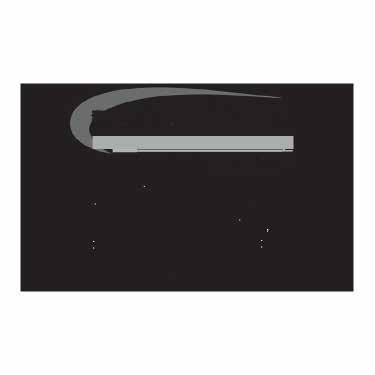
Chuck, Tori, Curt & Grace 10098 N. 2200E
Fairbury IL 61739
Chuck Cell 815-867-7011 www.lemenagercattle.com






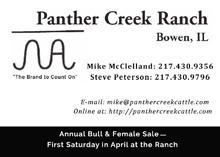

LARRY RHODES
217-473-5868 cell 217-854-5200 o ce rhodesangus@royell.org
9350 Rte 108, Carlinville, IL 62626 www.RhodesAngus.com







PRESIDENT
Kent Burns
618-521-3199
TREASURER
Buddy Edenburn 217-649-0108
MEMBERSHIP SERVICES
Emily Bernard 815-992-8233
illinoishereford@gmail.com
BOARD OF DIRECTORS
Cody Crum, 217-248-7282
Jodi McMillan, 815-751-2293
Chad Benedict, 217-246-5099
Matt Anderson, 309-267-1410
David Biggs, 815-441-4354
Kim Carney-Rhodes, 217-899-4104
Jimmy Bernard
Craig Crutcher
Andrew Spinazola
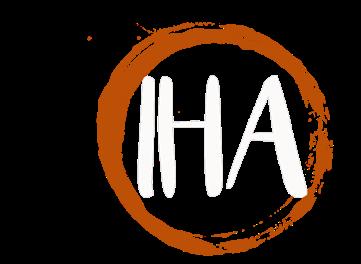
Paige Lemenager pets her Hereford cow during the IBA junior member of the year award winner shoot. Spring 2023.

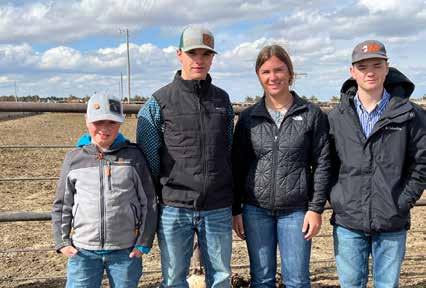
Owen and Shawn Crutcher and Kendall and Kade Boatman attended the 2023 NJHA Fed Steer Shootout Field Day in Scott City, Kansas, on April 15, 2023. The day included speakers from Cargill and the American Hereford Association. Sessions included, a Junior Networking Mixer with the National Junior Hereford Association Board of Directors; Cargill Team Members led workshops in carcass grading, quality and consistency, carcass defects and hides, and an Inside the Round and Meat Evaluation Activity. The NJHA Board of Directors also hosted Barnyard Olympics and Certified Hereford Beef sponsored a tri-tip lunch. After the morning sessions, attendees relocated the to HRC feed yards to view their entries. AHA Chief Operating Officer and Director of Breed Improvement, Shane Bedwell, and Executive Vice President Jack Ward, led a live cattle demonstration
with evaluation and pricing. While at HRC members also participated in rotations including health in the feedyard, nutrition basics and NJHA Fed Steer Shootout Program cattle viewing.
Six IJHA members attended the first ever Illinois Junior Beef Tour in May. They toured Illinois State University, Prairie View Farms, Duzan Agency and Backgrounding, Earlybird Feed, Raber Packing Co., the IBA Office, Timbercrest Veterinary Services and Timbercrest Land and Cattle.
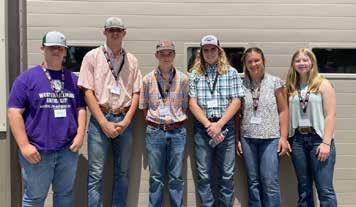
Members included: Jay Peterson, Connor Rhodes, Kade Boatman, Rhett Lehman, Kendall Boatman and Addison Stollard.
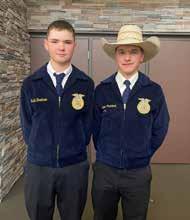
IJHA President, Kade Boatman and IJHA Treasurer, Shawn Crutcher, at the State FFA Livestock Judging Contest. Boatman won the Reasons Division and Crutcher won the Non-Reasons division at the contest held earlier this spring.


RF 8036 RICH GIRL 16J MORGAN RICHARDSON
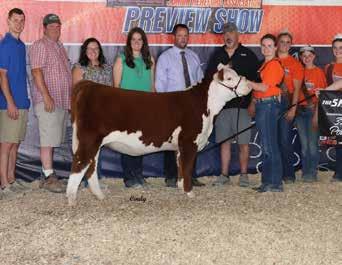
3RD OVERALL POLLED FEMALE
HAWK MONA 2208 ET ELLA BROOKS

RESERVE CHAMPION POLLED FEMALE
HAWK DANA 201 ET NOLAN LEE
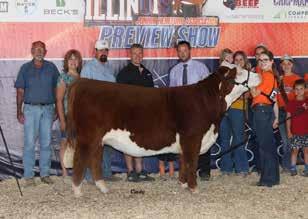
RGR JANET 150J
ELLA BANE 5TH OVERALL POLLED FEMALED


4TH OVERALL POLLED FEMALED

PURPLE MB ISABELLE 54K ET STETSON STOREY


CHAMPION HORNED FEMALE

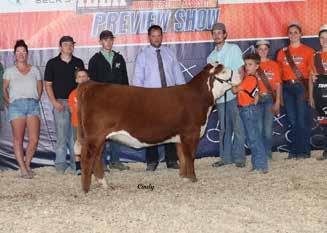
RESERVE CHAMPION HORNED FEMALE




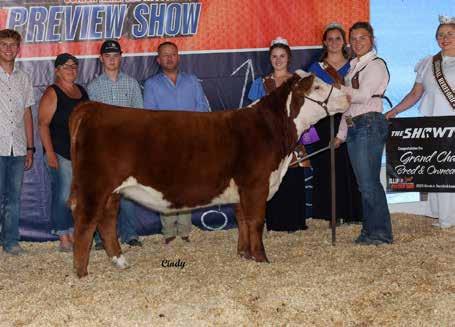
RESERVE
LEMENAGER

CHAMPION B&O FEMALE
KENDALL BOATMAN

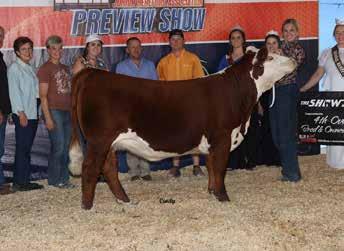

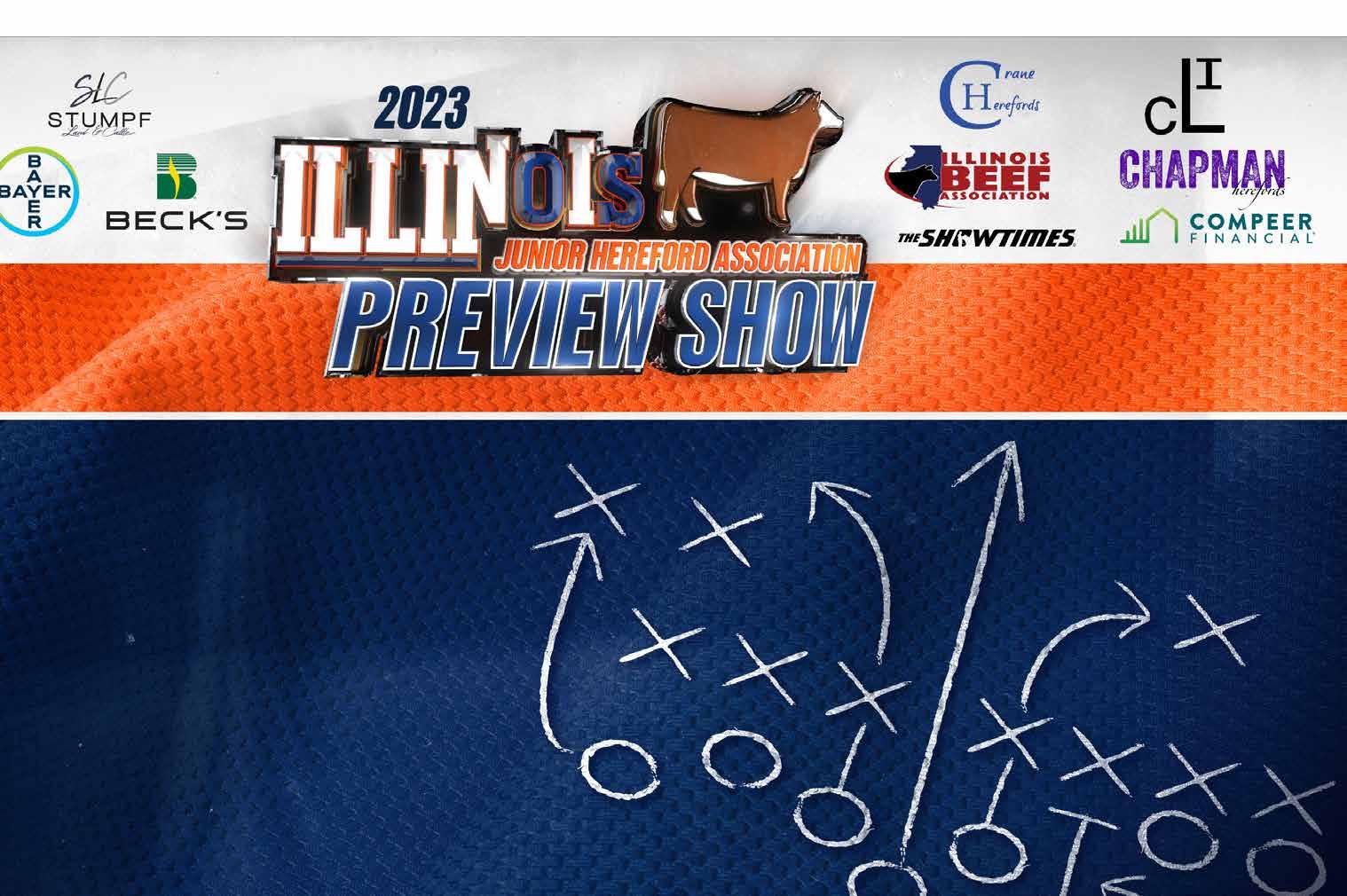
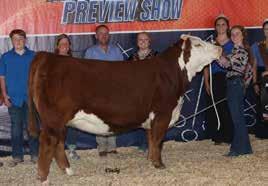
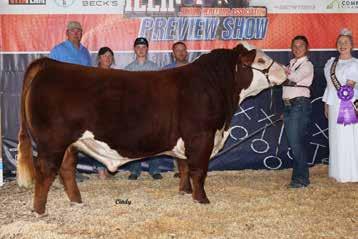
PERKS 2TK 5101 JABARI 1122 ET KENDALL BOATMAN
CHAMPION COW/CALF PAIR
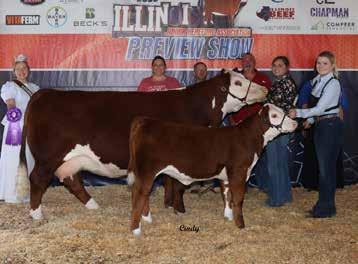
OAKS FOXIES DOUBLE 117G KRISTA ALLSCHEID

HAWK ANCHOR 18K AIDAN KNOBLOCH
RESERVE CHAMPION B&O BULL

LF PMH 8071 MR. T ET LOGAN RHOADS
RESERVE CHAMPION COW/CALF PAIR
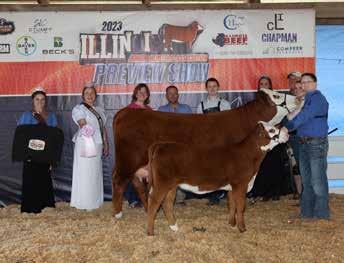
HPH 756 LADY LUCK 5480J NICK JONES
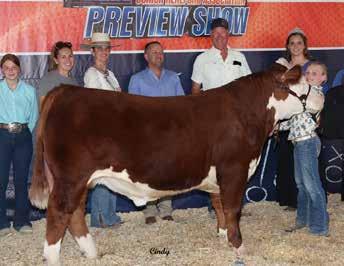
EF D87 OLIVER 10K ET HADLEY EUBANK


CHAMPION: LAUREN MCMILLAN
RESERVE CHAMPION: MOLLY BIGGS
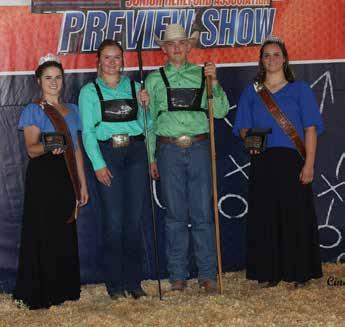
CHAMPION: RESERVE CHAMPION: BRENNA BARTLOW NOLAN LEE
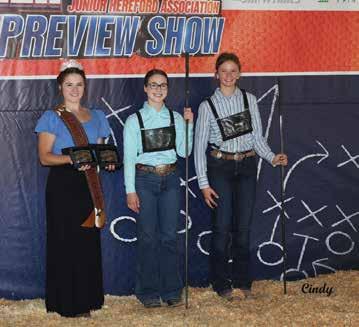
CHAMPION: ELLA BANE
RESERVE CHAMPION: FAITH BENEDICT
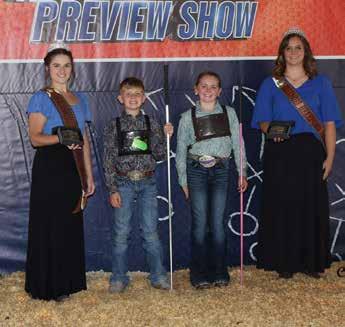
CHAMPION: CRAYTON CHAPMAN
RESERVE CHAMPION: BRYNLEY PYSZKA


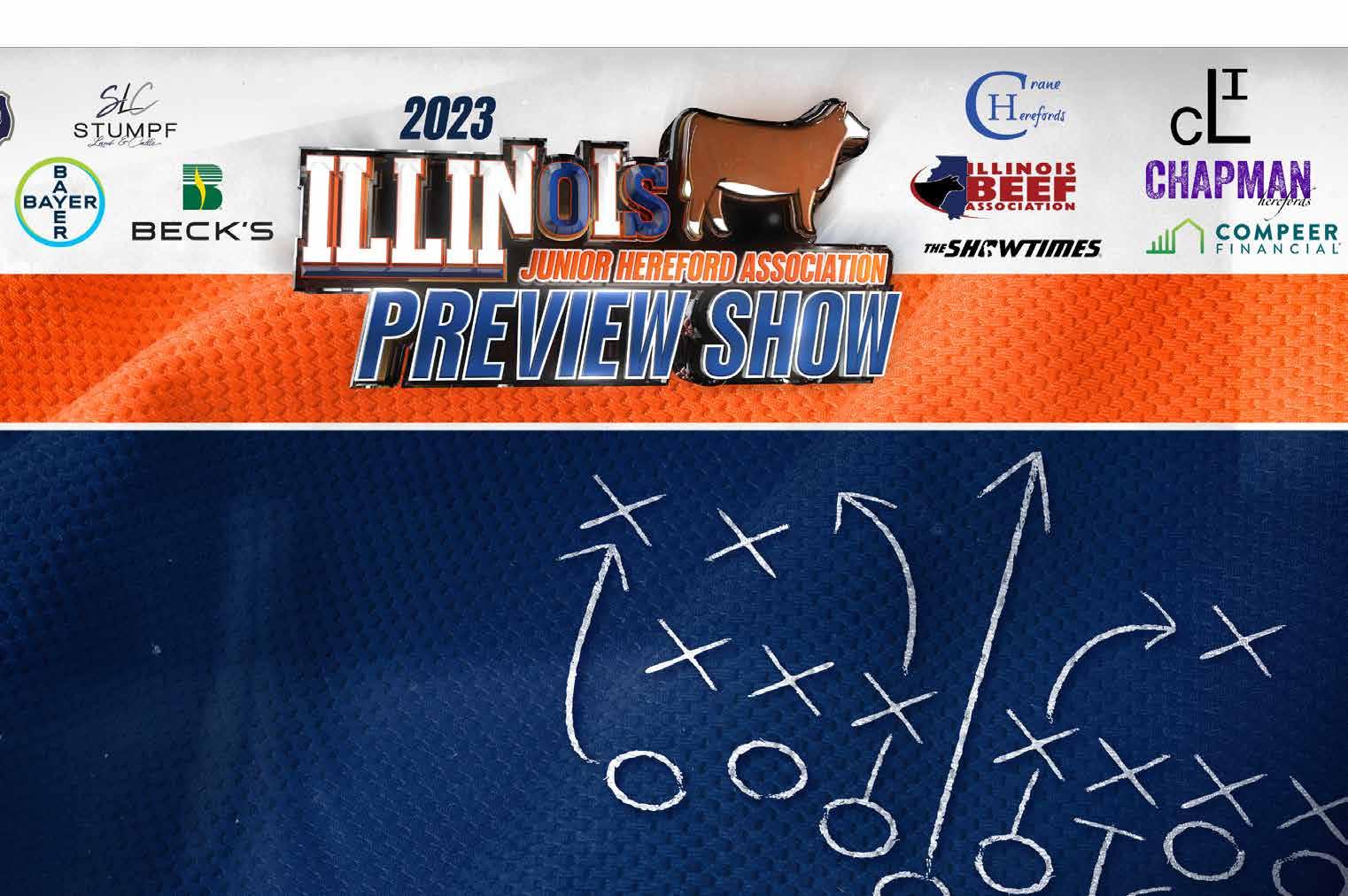





RETIRING MEMBERS:
Cassie Allscheid, Lauren McMillan, Kira Sayre, Molly Biggs.
Not Pictured: Krista Allscheid, Abbigail Peterson.

SALES AND SPEECH:
Caden Perry, Kendall Boatman, Corbin Perry, Owen Crutcher, Ella Bane, Addison Young, Faith Benedict
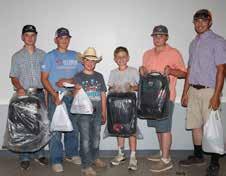
FITTING CONTEST:
PEEWEE: Champion - Crayton Chapman Reserve - Owen Crutcher
JUNIOR: Champion - Stetson Storey Reserve - Karson Sundberg

2023 ROYALTY: Princess, Shelby Pearl; Queen, Elaina Walsh; Princess, Allie Anderson

WAYNE SAGE MEMORIAL SCHOLARSHIP
Molly Biggs
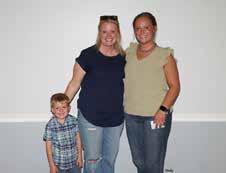
CHRIS STEPHENS MEMORIAL SCHOLARSHIP: Molly Biggs
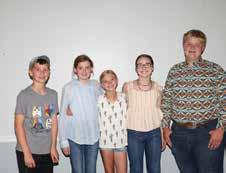
JNHE JUNIOR HEREFORD BOWL TEAM: Payton Garnhart (alternate), Addison Duis, Cora Belle Chapman, Ella Bane, Brogan Keltner
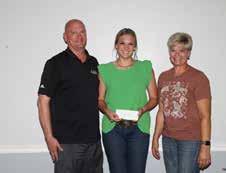
SAM TAYLOR MEMORIAL SCHOLARSHIP: Lauren McMillan
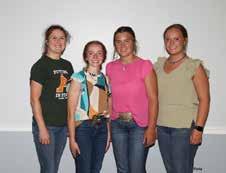
JNHE SENIOR HEREFORD BOWL TEAM: Kira Sayre, Morgan Richardson, Kendall Boatman, Molly Biggs.
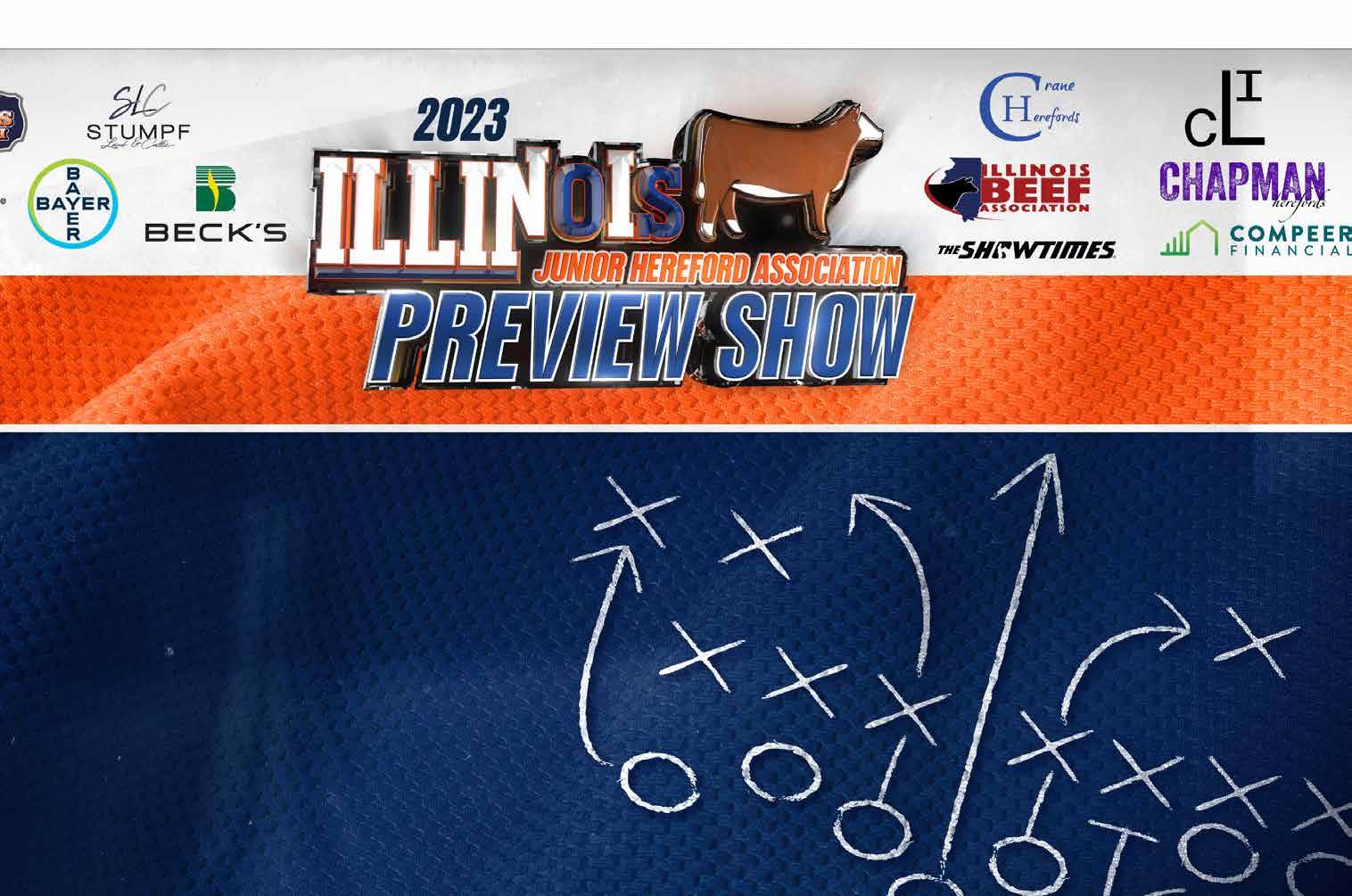
SENIOR: Champion - Kade Boatman Reserve - Simon Shepard

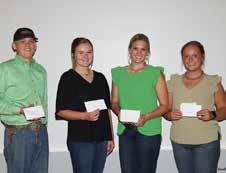
SHOWMANSHIP WINNERS:
INTERMEDIATE:
Champion - Brenna Bartlow Reserve - Nolan Lee
SENIOR:
Champion - Lauren McMillan Reserve - Molly Biggs

PROSPECT AWARD WINNERS:
BACK ROW: Caden Perry, Griffin Anderson, Cora Belle Chapman, Lily Anderson, Addison Young, Faith Benedict.
FRONT ROW: Maggie Shepard, Ty Anderson, Crayton Chapman, Owen Crutcher, Corbin Perry, Gabe Crutcher.

BACK ROW: Rhett Lehman, Trevor Crutcher, Aidan Knobloch, Caden Perry, Nolan Lee, Kade Boatman, Shawn Crutcher.
FRONT ROW: Morgan Richardson, Kendall Boatman, Simon Shepard. Not Pictured: Clayton and Denton Stapleton.

2023-2024 IJHA BOARD OF DIRECTORS
BACK ROW: Kendall Boatman (Secretary), Morgan Richardson, Kade Boatman (President), Molly Biggs (Director of Public Relations), Emma Richardson, Shawn Crutcher (Treasurer). FRONT ROW: Houston Stepleton (Vice President), Nolan Lee, Connor Rhoads, Rhett Lehman, Aidan Knobloch. Not Pictured: Paige Lemenager.

FACES OF LEADERSHIP TRAVEL SCHOLARSHIP WINNERS: 2023 IJHA OUTSTANDING MEMBER Molly Biggs 2023 IJHA SPIRIT AWARD: Logan Rhoads
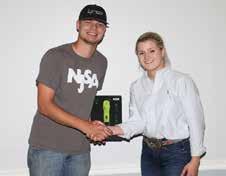




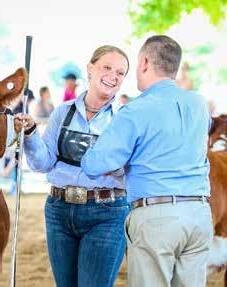

Retiring
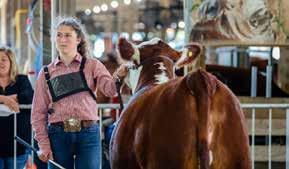
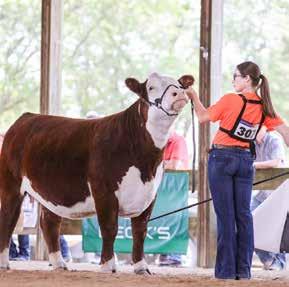
Advisors,

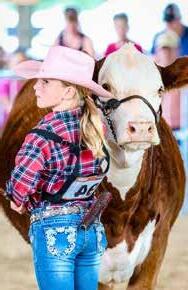

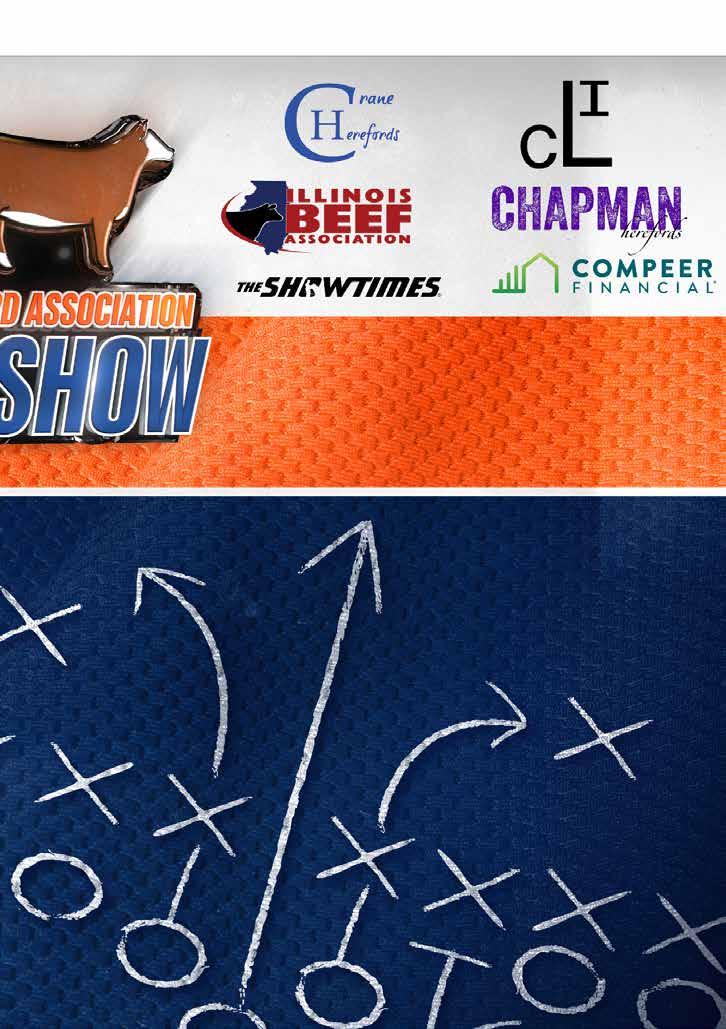


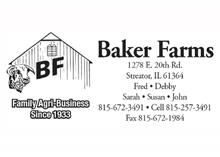

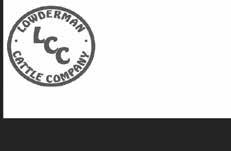









Well as I sit down to write this little article, it is a cloudy cool day but we need about 3 or 4 more days of this with some rain. We had 0.1-0.2 inches of rain from Mother’s Day until the end of June. Recently, we got an inch of rain to help green us back up. We did miss the winds here recently but that also means we missed the rain too. Our saving grace has been the low 80 temps and low humidity. The sun has also been filtered with all of the smoke from our friends to the north.
The month of June brought us into the summer show season. The Illinois juniors started off with their state preview show. A great set of cattle and an even better set of kids came to Lincoln for a two day event on June 3-4. They spent Saturday practicing for contests to prepare for the regionals that were held in June, and the upcoming national in July. I got to help with the sales talk practice sessions. It is fun to sit and listen to the kids give their best sales pitch on some nice heifers. On Sunday morning, we had our show with a nice crowd in the stands. The juniors and their advisors do an awesome job of running this event. I had the honor of being the ring man for the day, I enjoyed the front row seat and seeing the smiles on the kid’s faces.
The next two weeks of June, nearby states hosted two regionals. The Eastern Regional was held in Lima, Ohio, and the South Central Regionals were in Springfield, Missouri. The Illinois kids had two great weeks at these events. This all led up to the big event, The National Classic. This year it is in Des Moines, Iowa, from July 7-13. I have to say this year is way more relaxing getting ready for this show. Last year, Illinois was hosting this event and so much had to be done but it all came together. We had a great week last year and I am sure Iowa will not disappoint either.
Well the next time I write one of these it will be the middle of August and the state fair will be over. The summer seems to go faster every year but we are making the most of it with our family and making memories. Here’s to hoping we all get some more rain with no big wind storms. Good luck showing kids, and producers I hope breeding is winding up with great success. Enjoy your summer.
Scott Frederick, ISA President
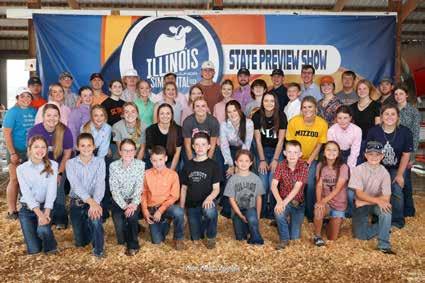
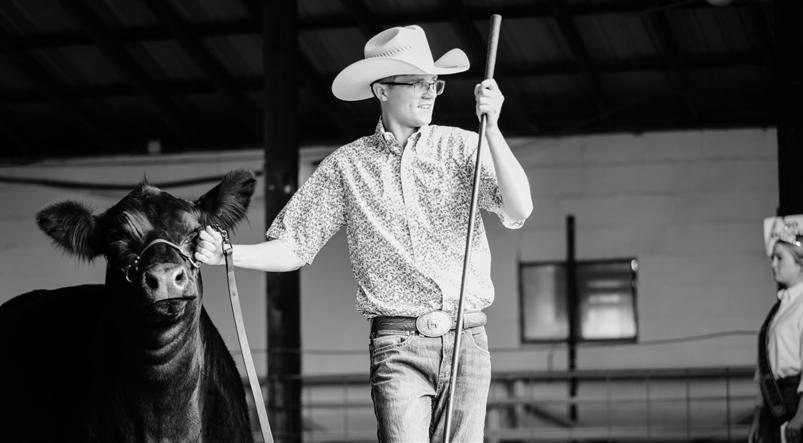
Lincoln, Ill. | June 3-4 | Judge: Ty Webster, Mo.






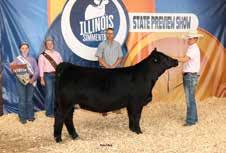
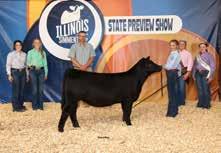


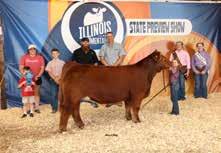
5th Overall Percentage Heifer
Maci Beckman
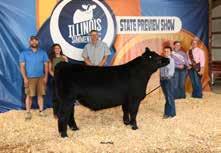
Champion Steer
Lindy Kane

Champion Purebred Bred & Owned Bull
Luke Hadden


Champion Bred & Owned
Purebred Heifer
Luke Hadden

Reserve Champion Steer
Holden Miller
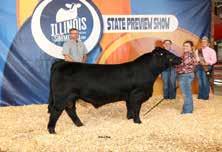
Reserve Champion Purebred Bred & Owned Bull
Grace Lemenager

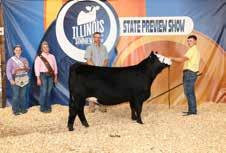
Reserve Champion Bred & Owned Heifer
Ty Knodle

Champion Percentage Bred & Owned Bull
Cody Knodle
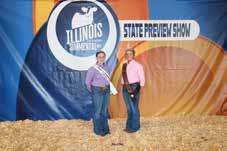


2023 Illinois Junior Shorthorn Association Preview Show
Clinton, Ill. | June 4 | Judge: Murray Perkins, Tenn.
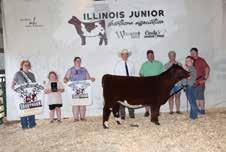
Grand Champion Heifer
Tenley Wickline

Reserve Champion Bred & Owned Heifer
Laci Wernicke

Reserve Champion Bred & Owned Shorthorn Plus Heifer
Isabella Forbes
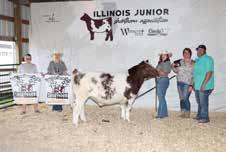
Grand Champion Bred & Owned Steer
Isabella Forbes
Photos by Cindy’s Livestock Photos

Reserve Grand Champion Heifer
Maddox Reedy
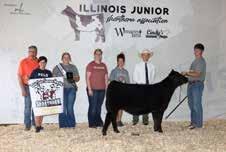
Champion Shorthorn Plus Heifer
Kesler Collins
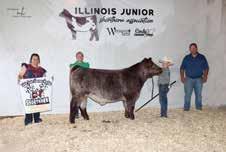
Grand Champion Steer Maddox Reedy
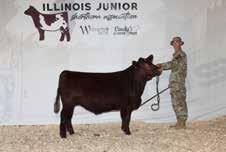
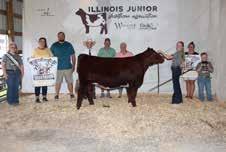
Champion Bred & Owned Heifer
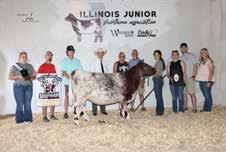
Reserve Champion Shorthorn Plus Heifer
Ella James
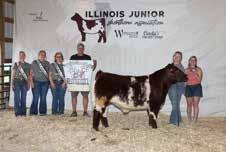
Reserve Grand Champion Steer
Georgia Hervell
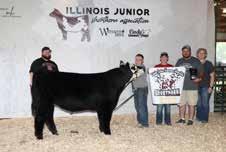

Reserve Champion Shorthorn
Plus Steer
Colby Metzger
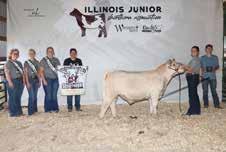
Grand Champion Bred & Owned Bull

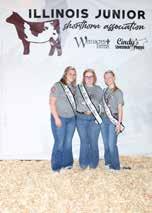

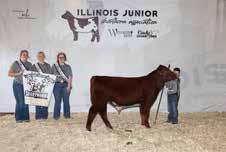
Reserve Grand Champion
Bred & Owned Bull
Noah Miles

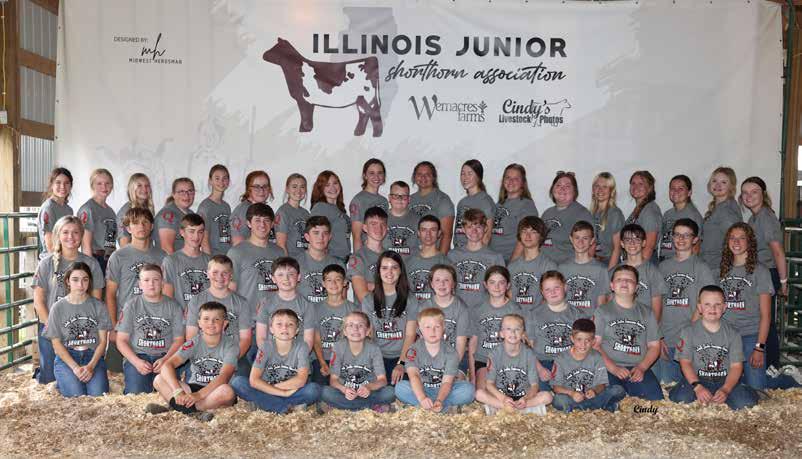
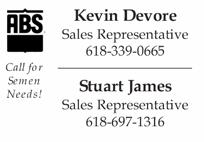





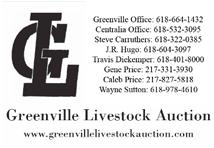



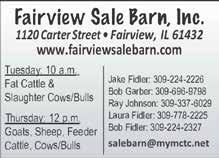

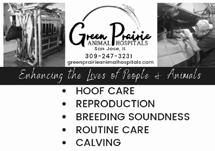














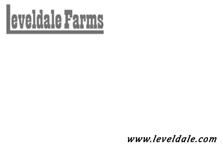


Illinois Beef, printed bi-monthly, is the official publication of the IBA. It serves as the voice of Illinois’ 12,000 beef producers.


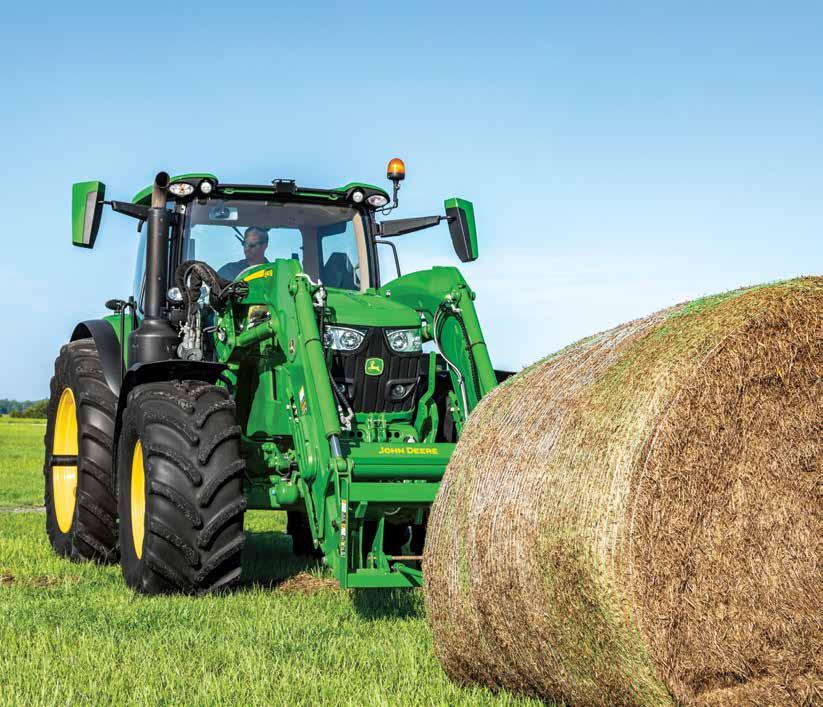







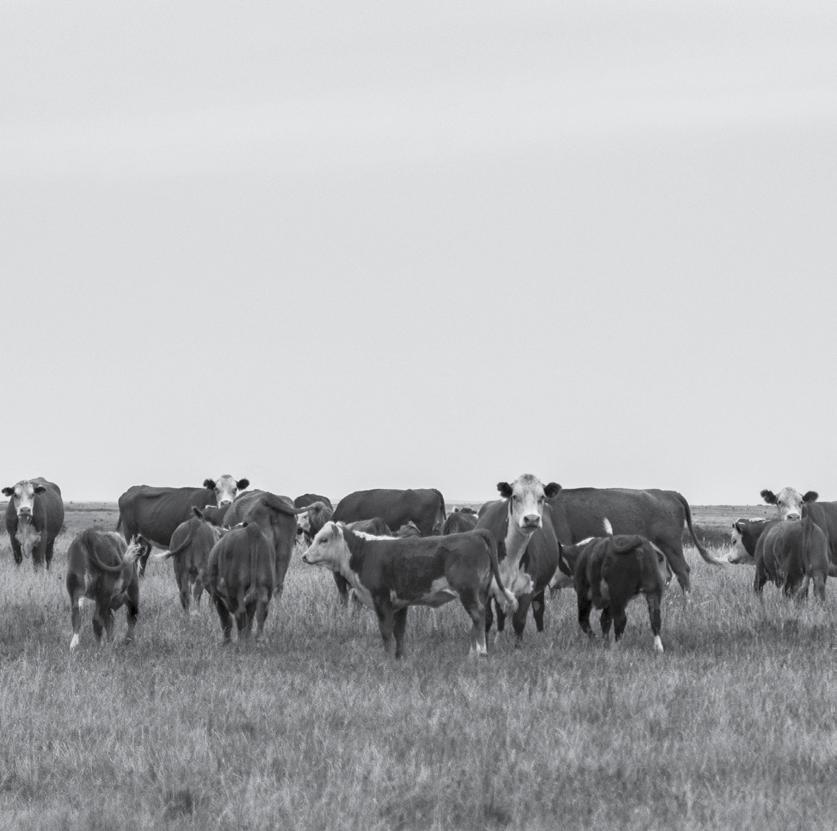
All cattle vaccines from Merck Animal Health now live under the BOVILIS® name. They’re the same vaccines you’ve relied on for years – only with updated names and packaging.
Each product has its own distinct color and is clearly marked, making it easy to ensure you’re selecting the right vaccine at the right time. No matter how you build your protection, efficacy and ease of use are present in every single vaccine.
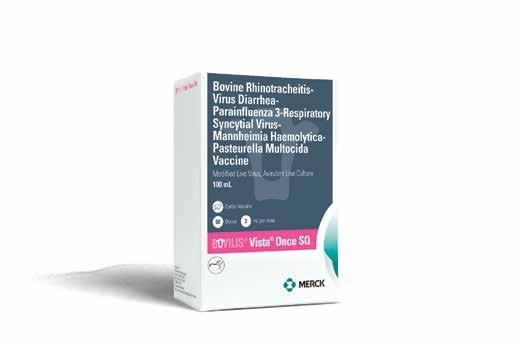
BOVILIS VISTA ONCE SQ

Shown effective against:
• IBR
• PI3
• BRSV
• BVD Types 1 & 2
• Pasteurella multocida
• Mannheimia haemolytica
BOVILIS VISION 7 SOMNUS WITH SPUR®
Shown effective against:
• Clostridium chauvoei (Blackleg)
• C. septicum (Malignant edema)
• C. novyi (Black disease)
• C. sordellii
• C. perfringens Types C & D (Enterotoxemia)
• Haemophilus somnus